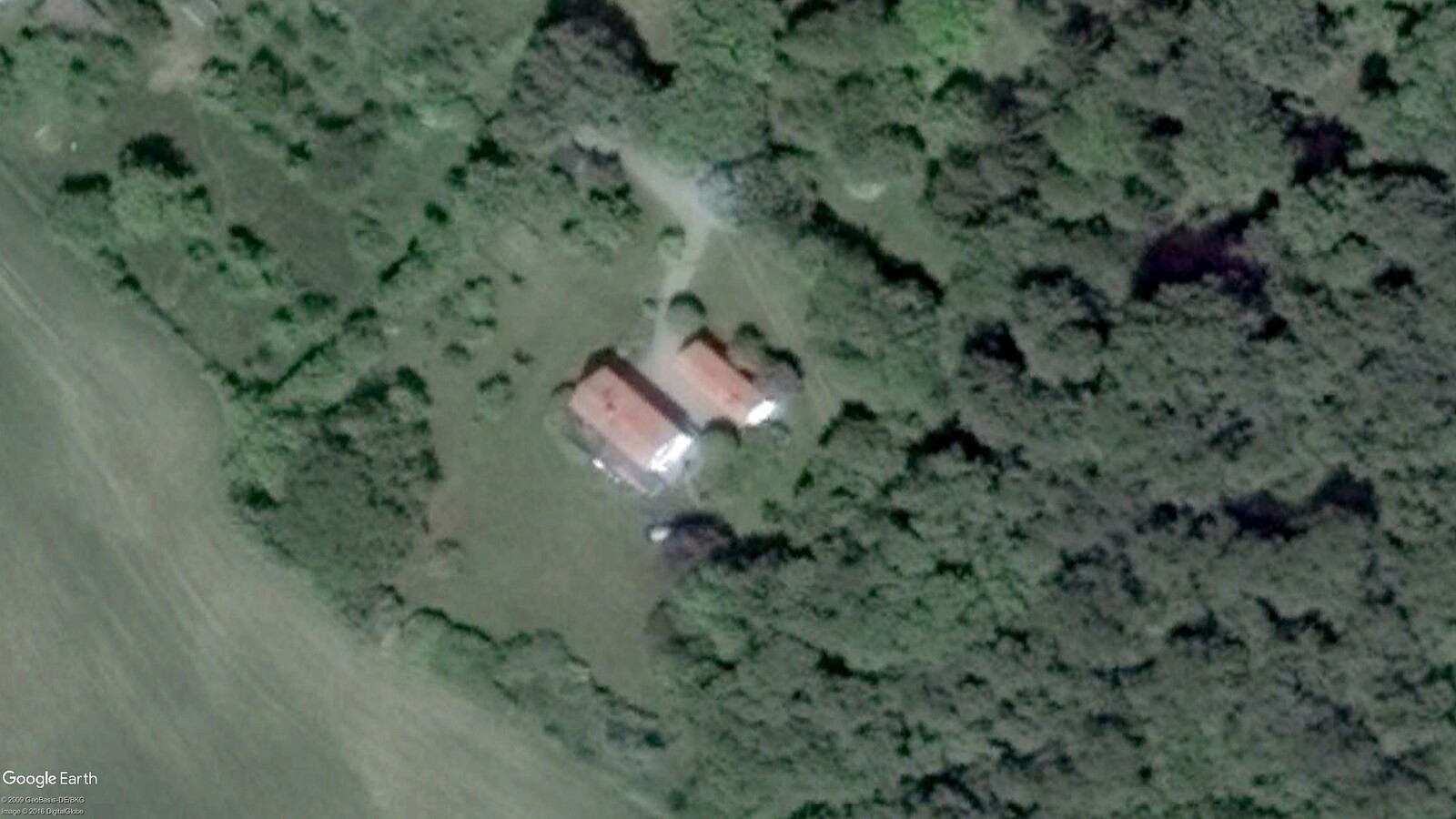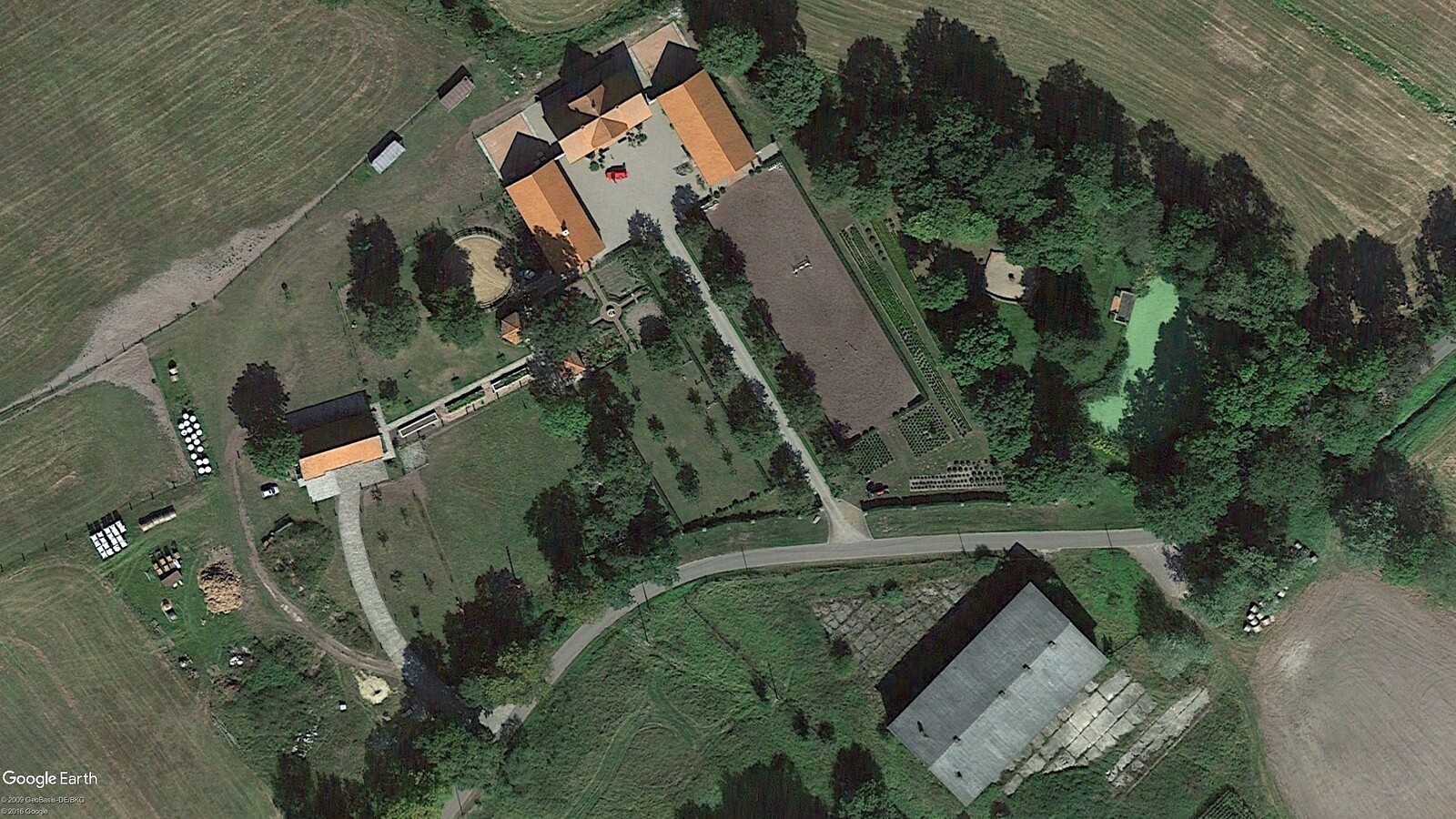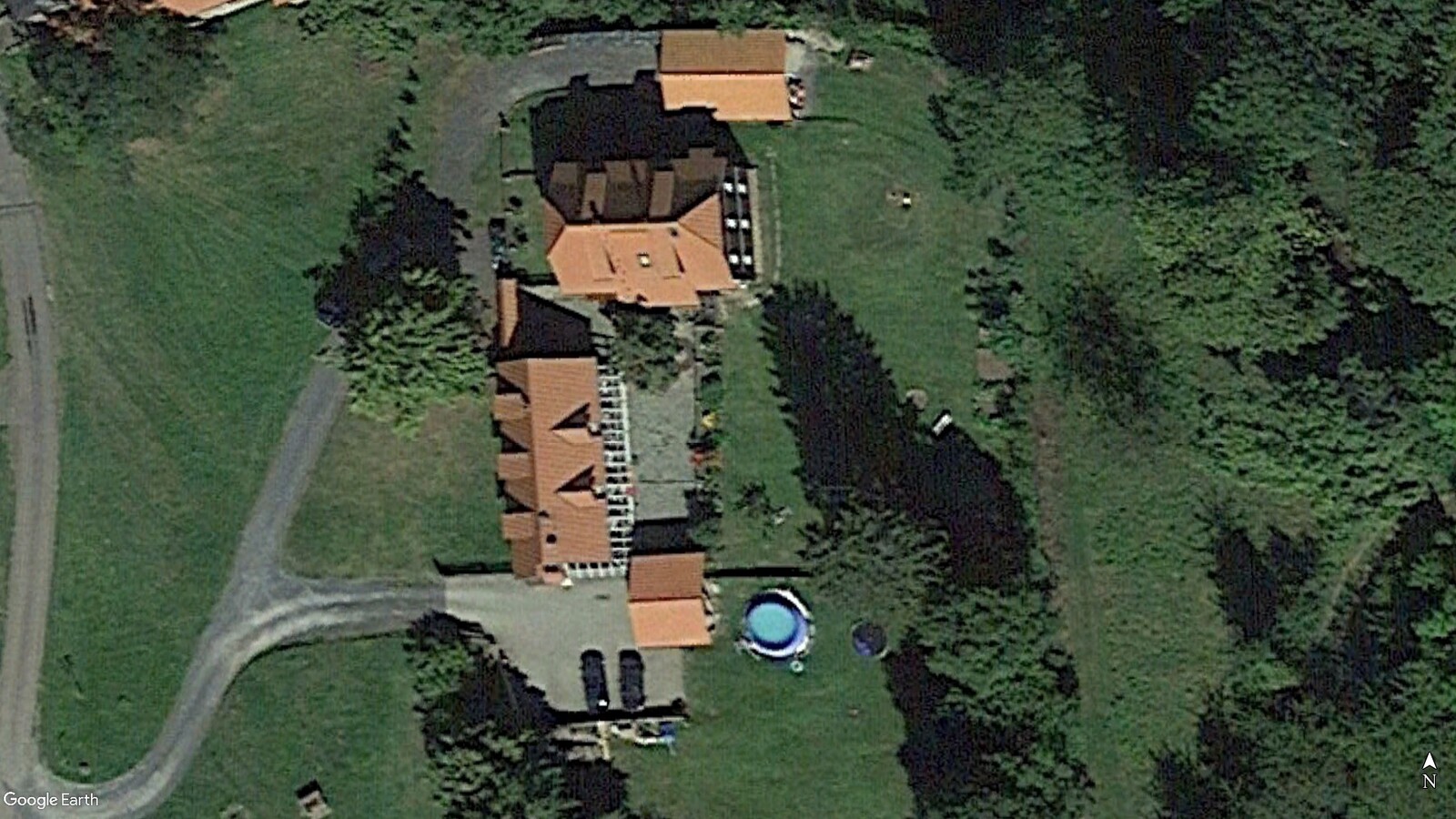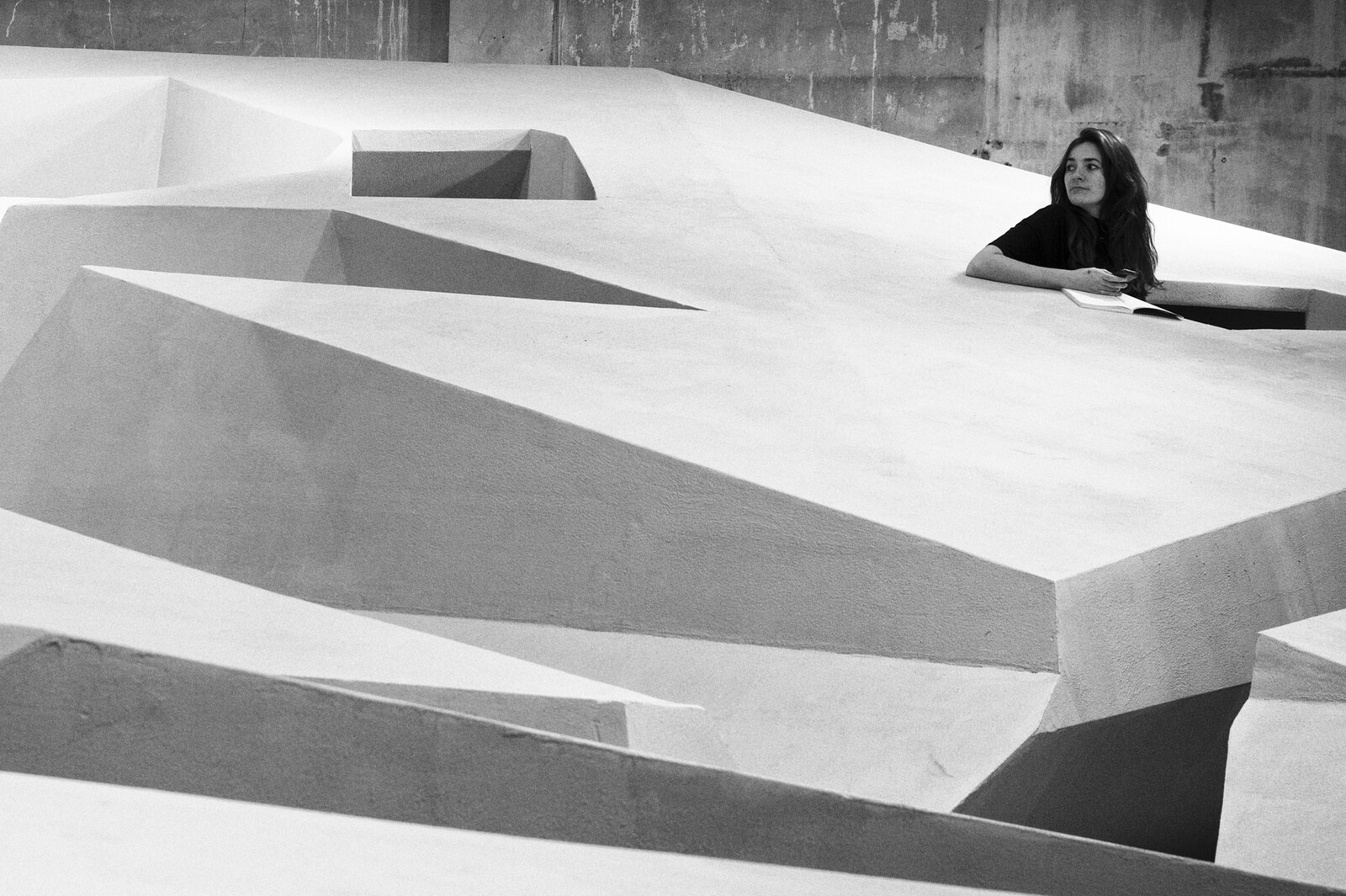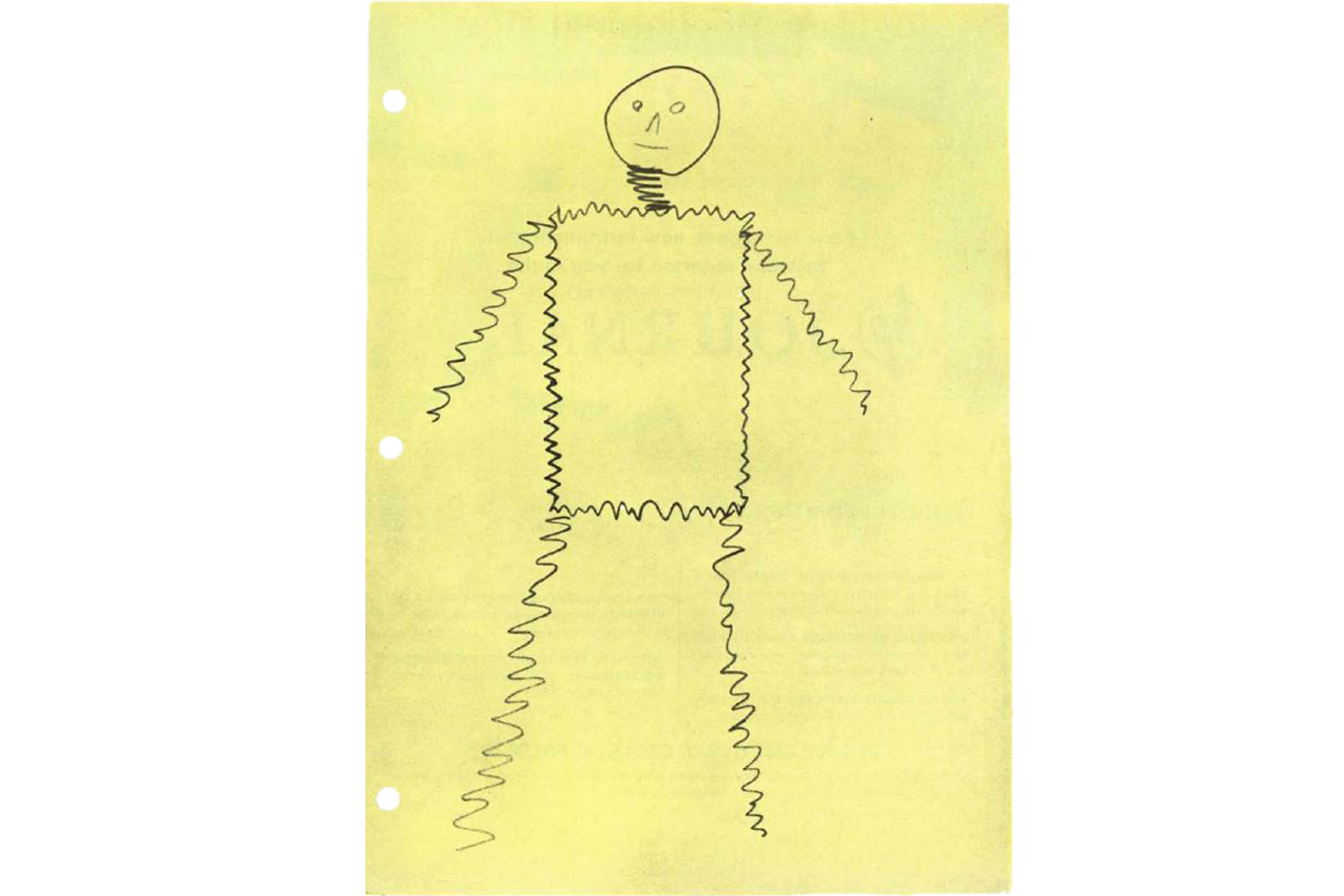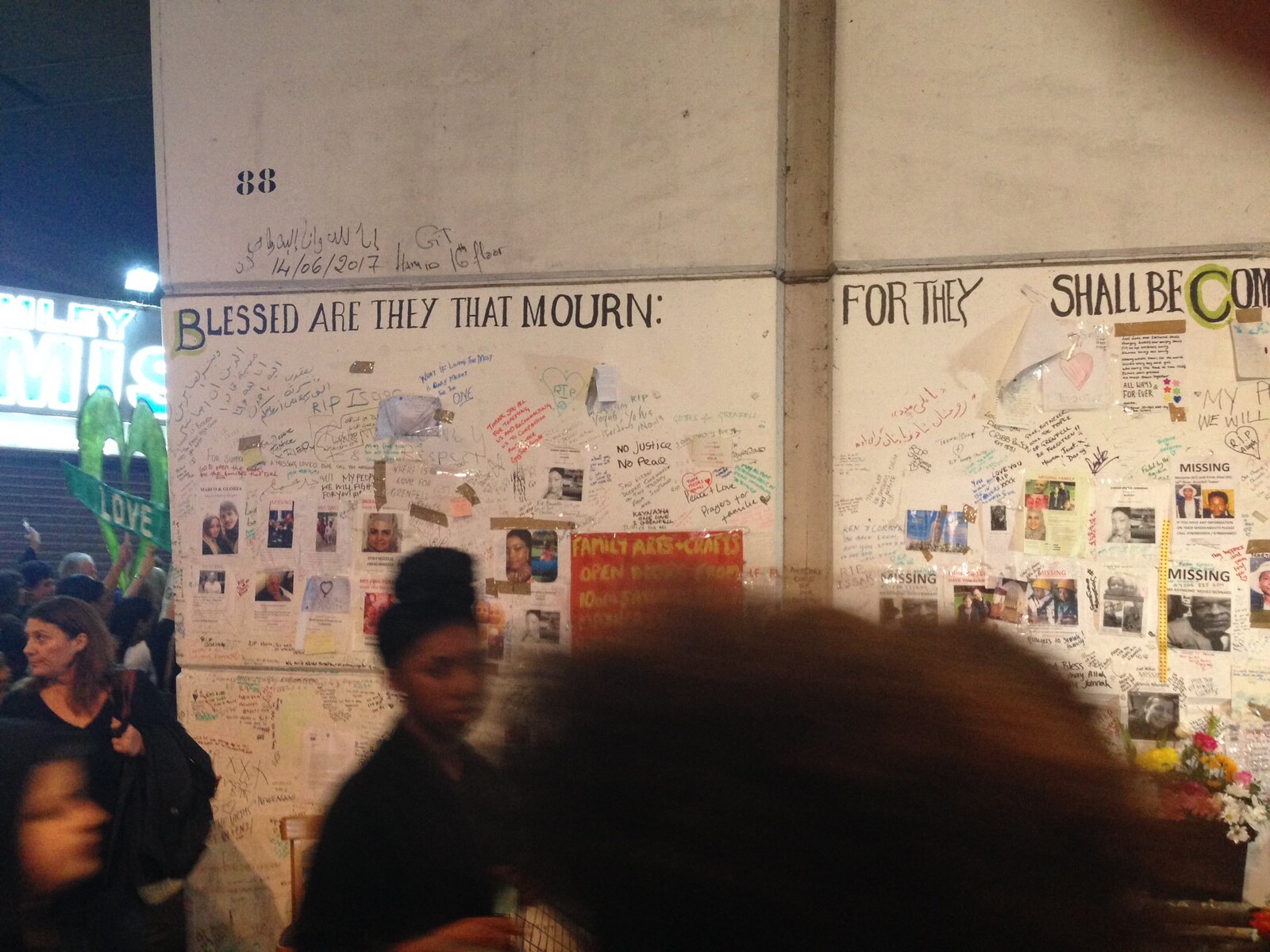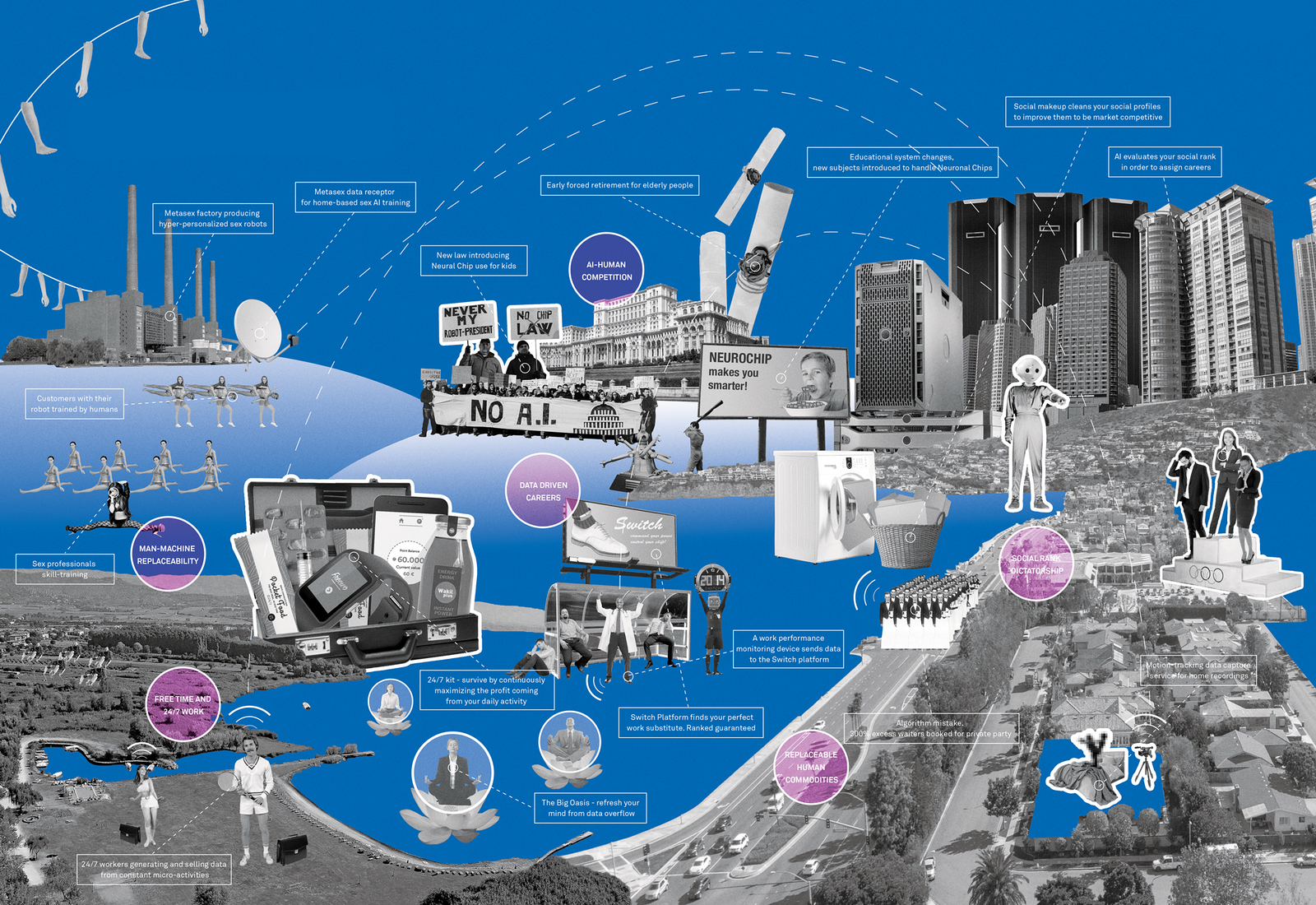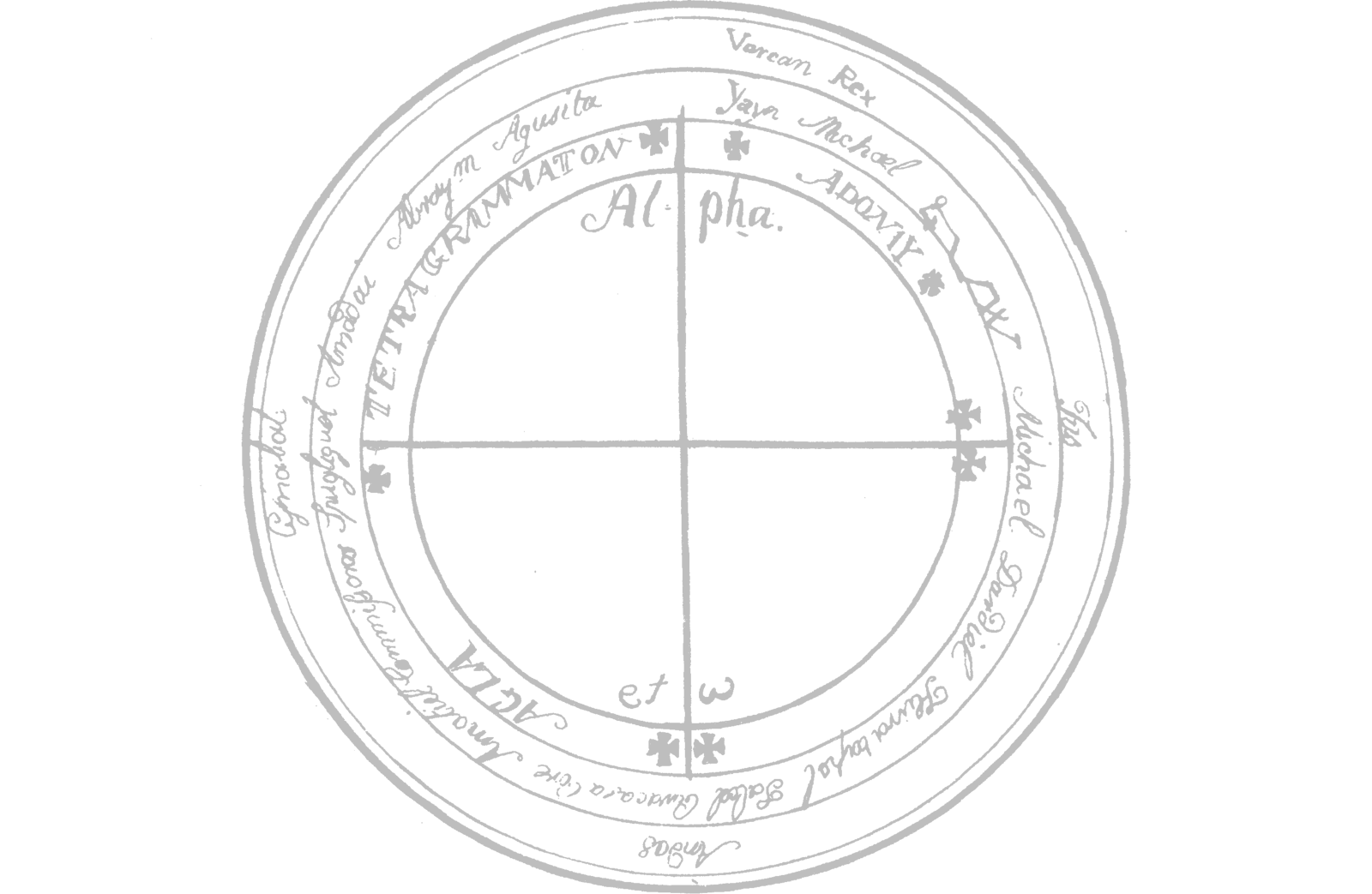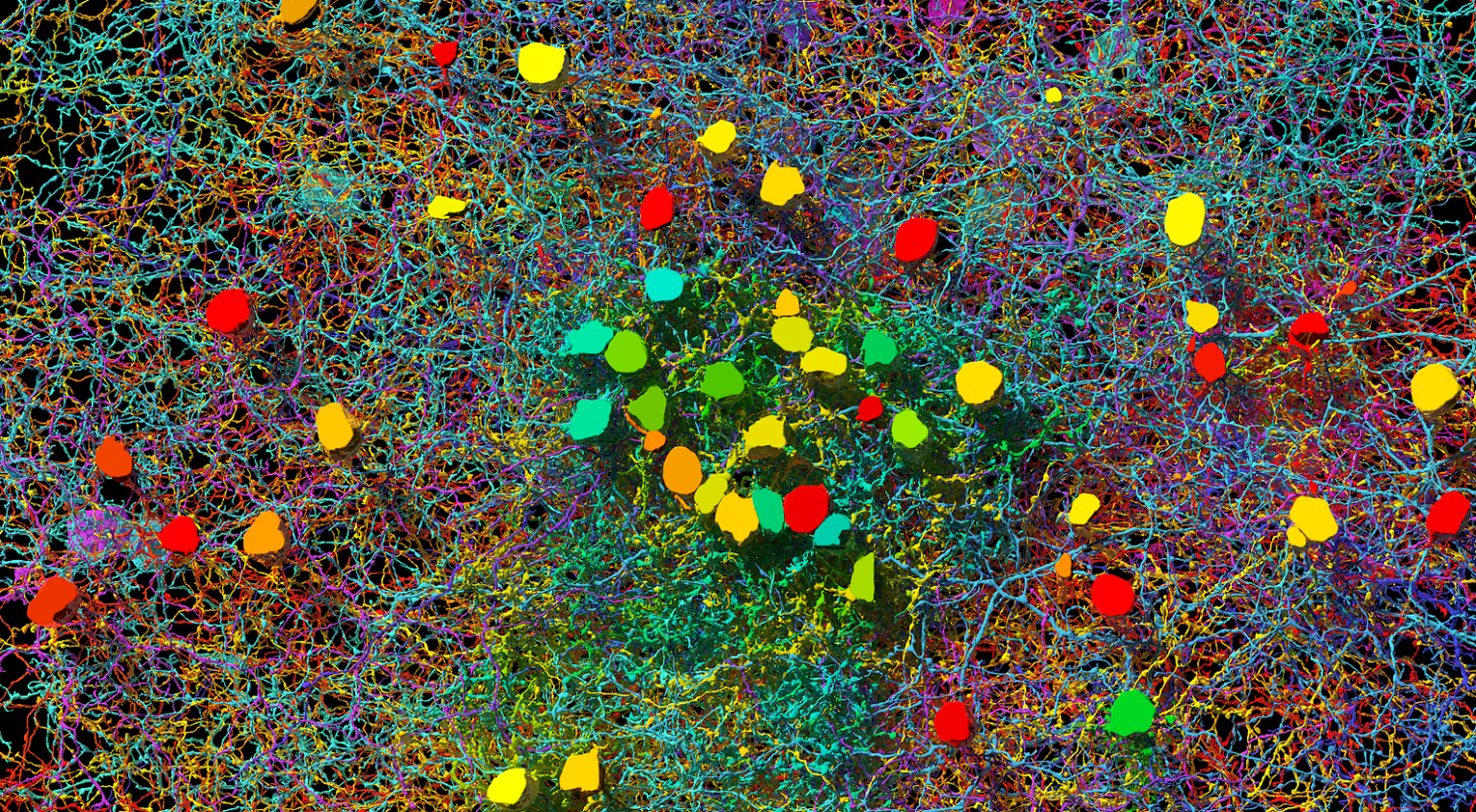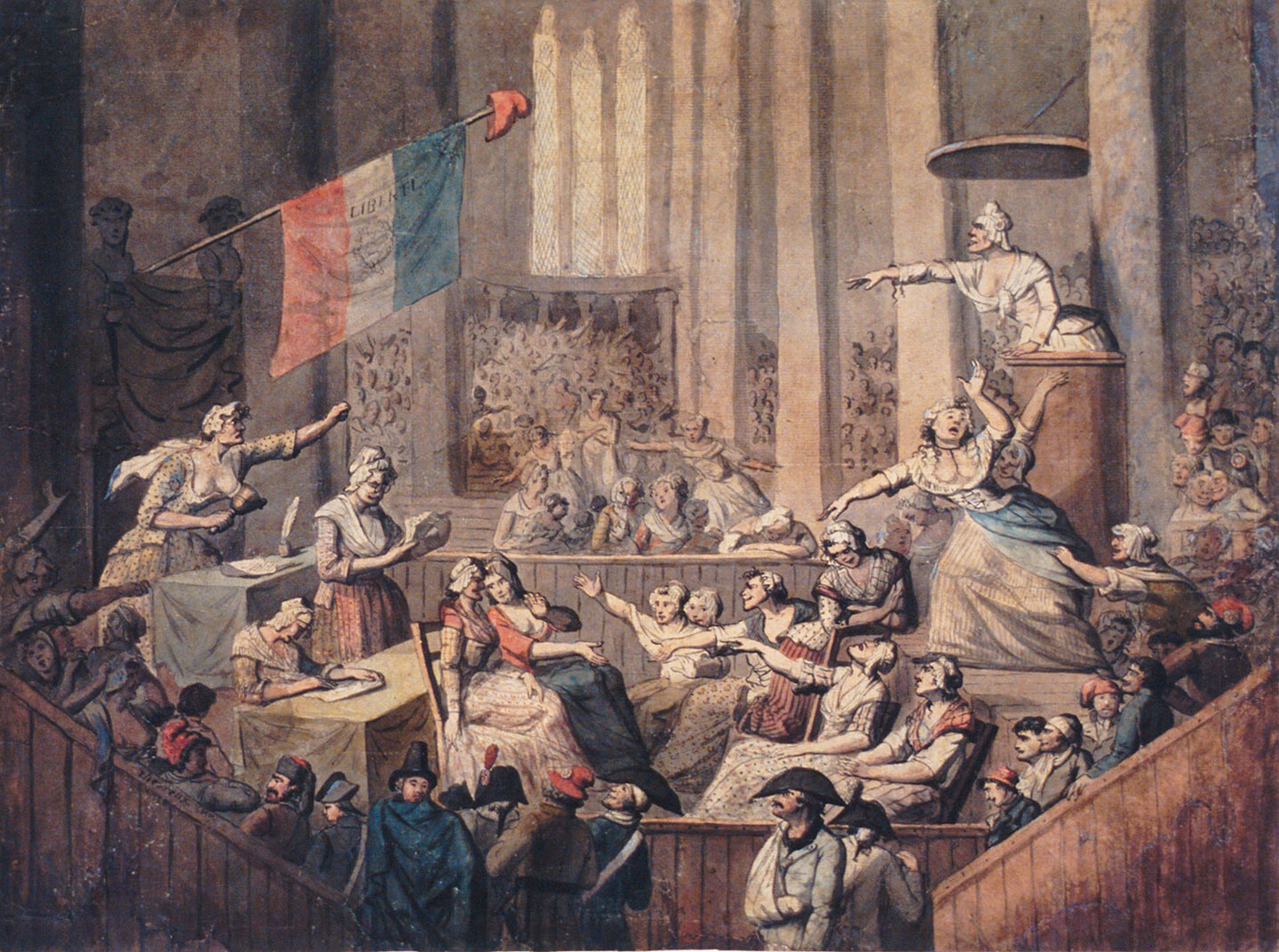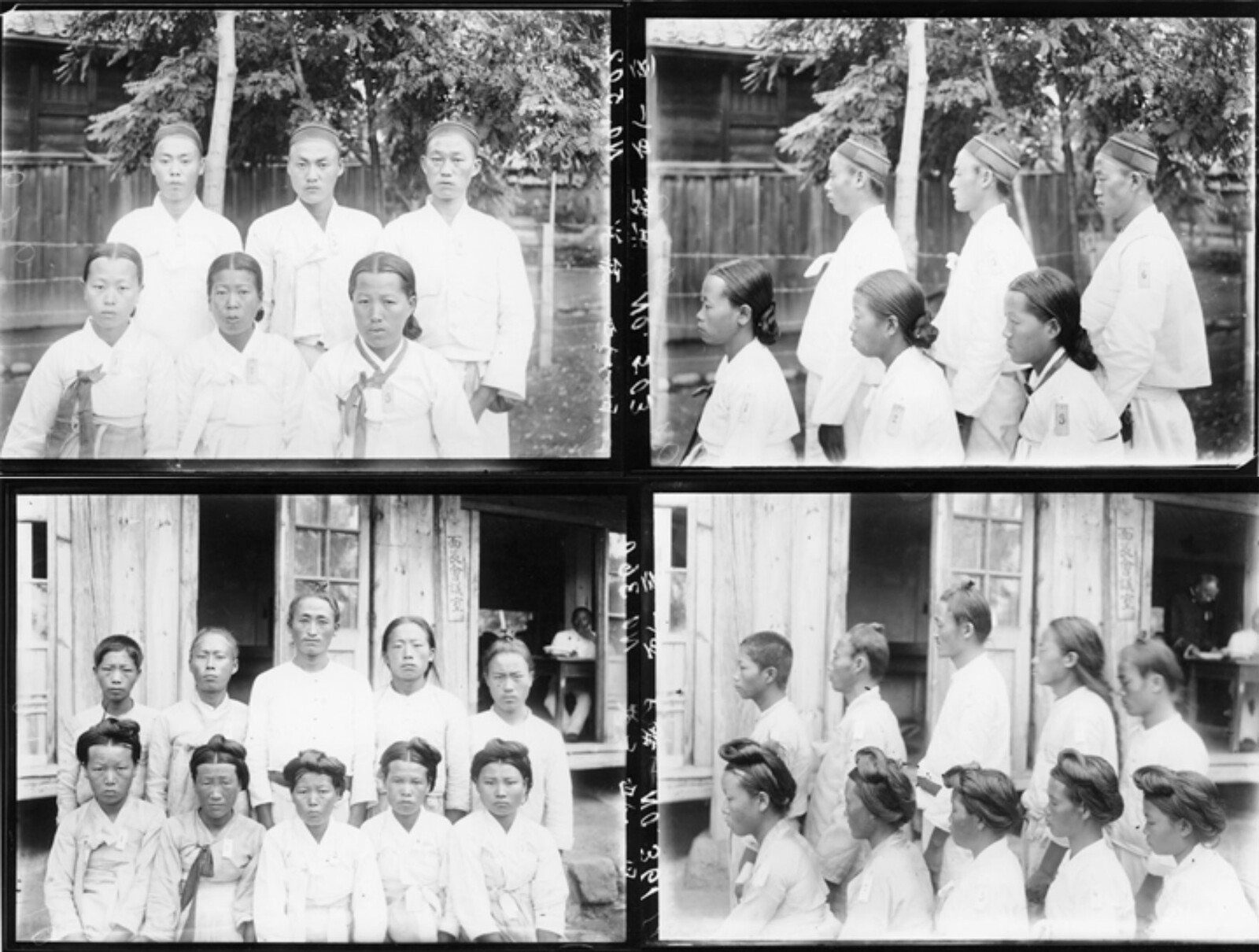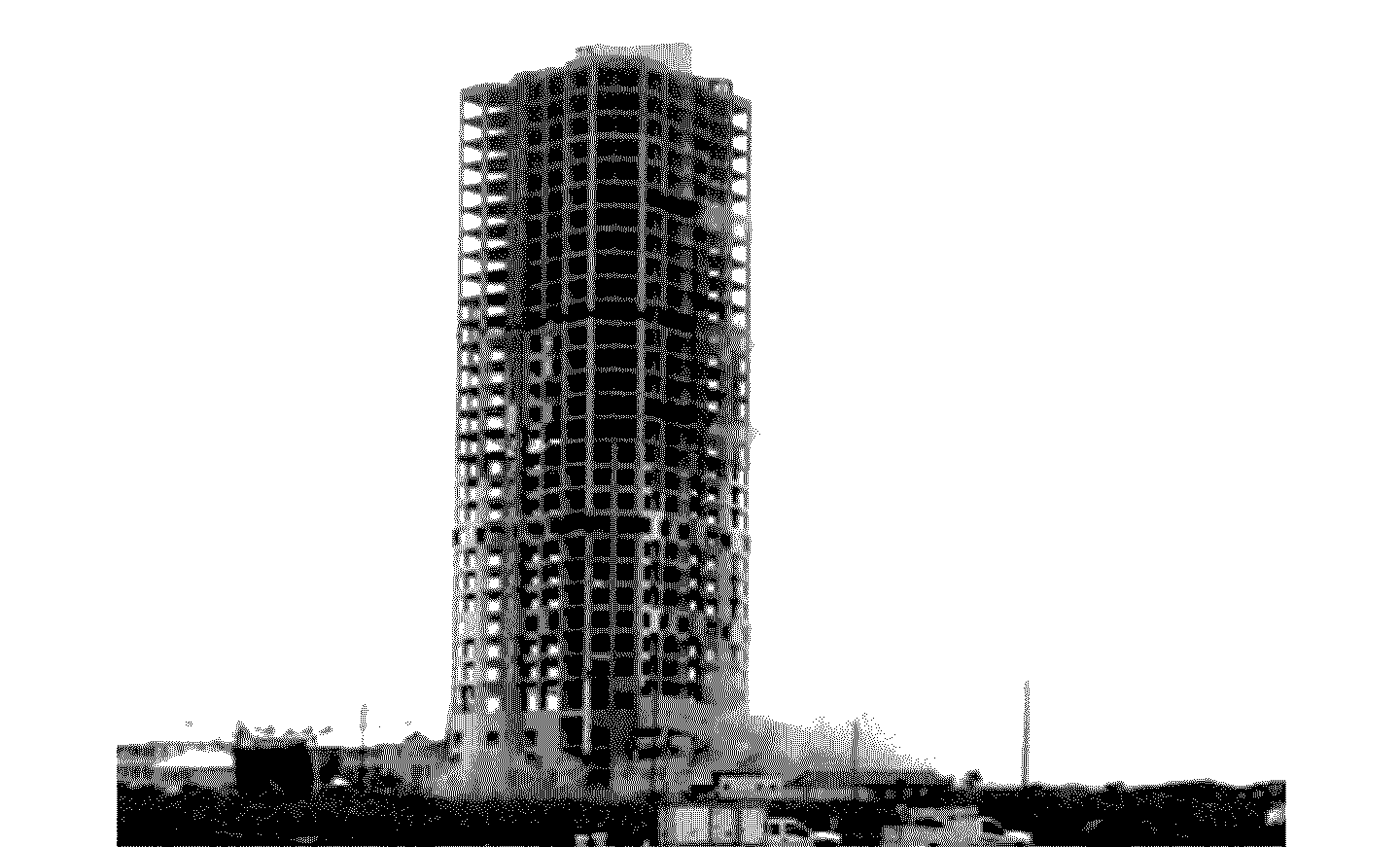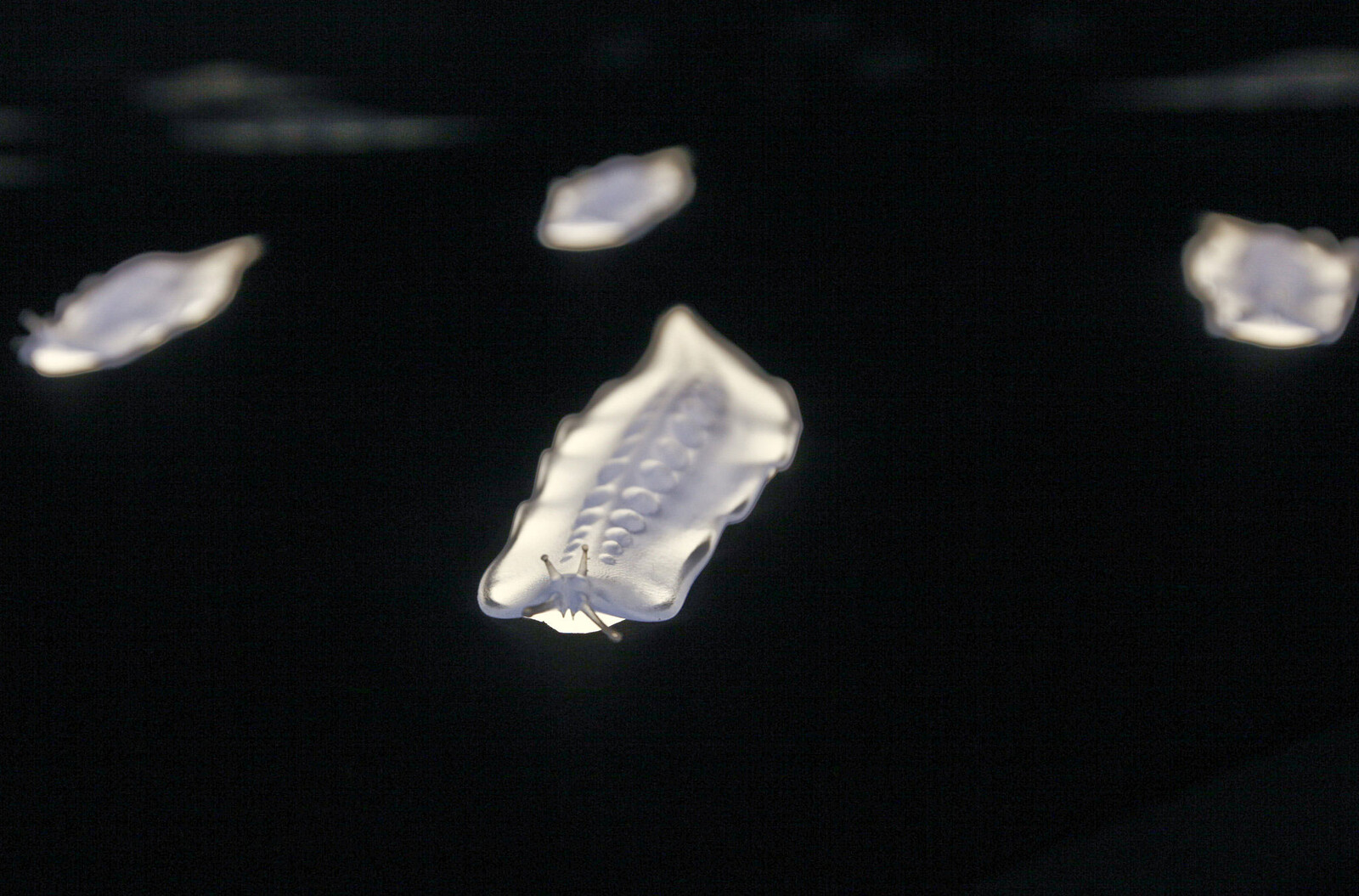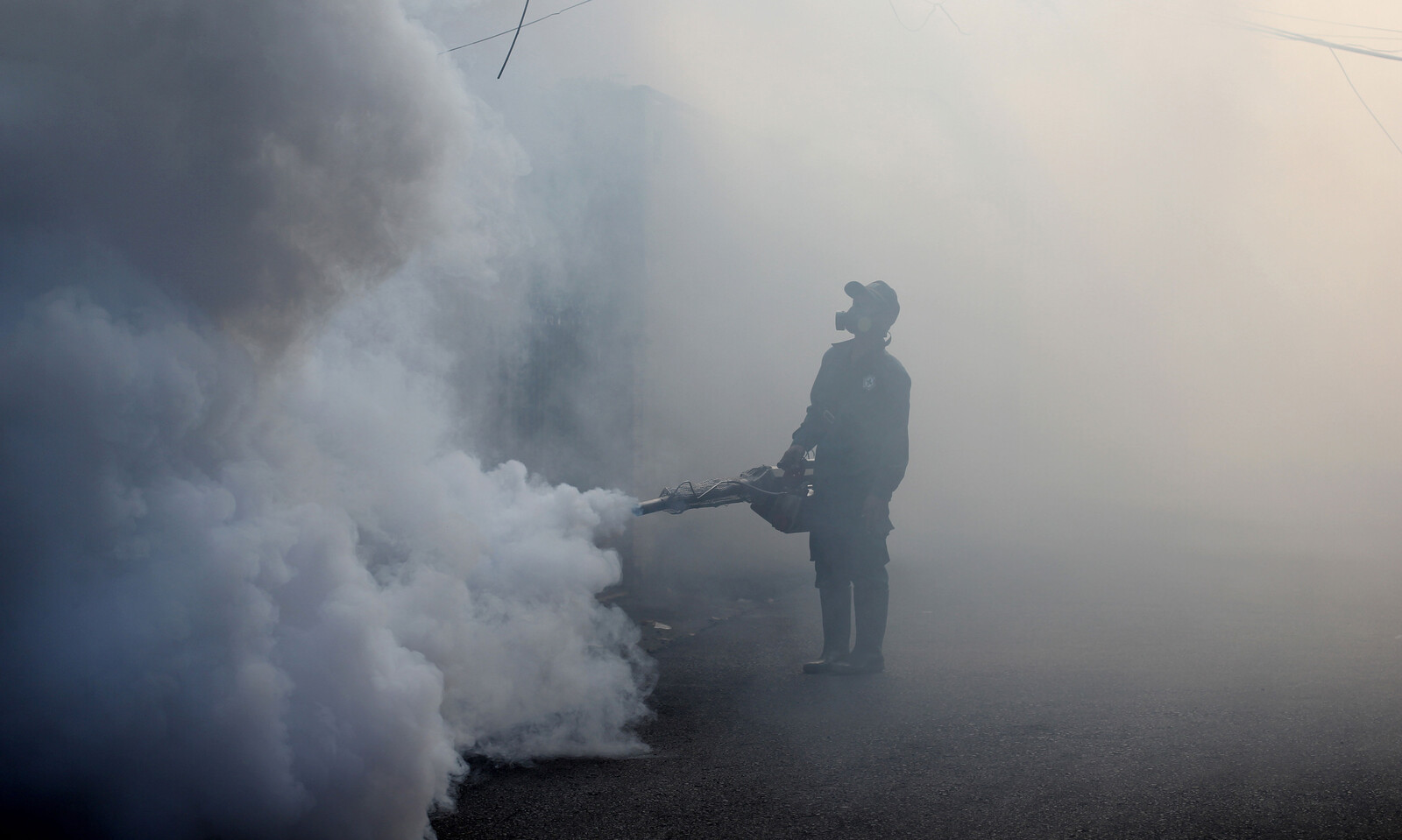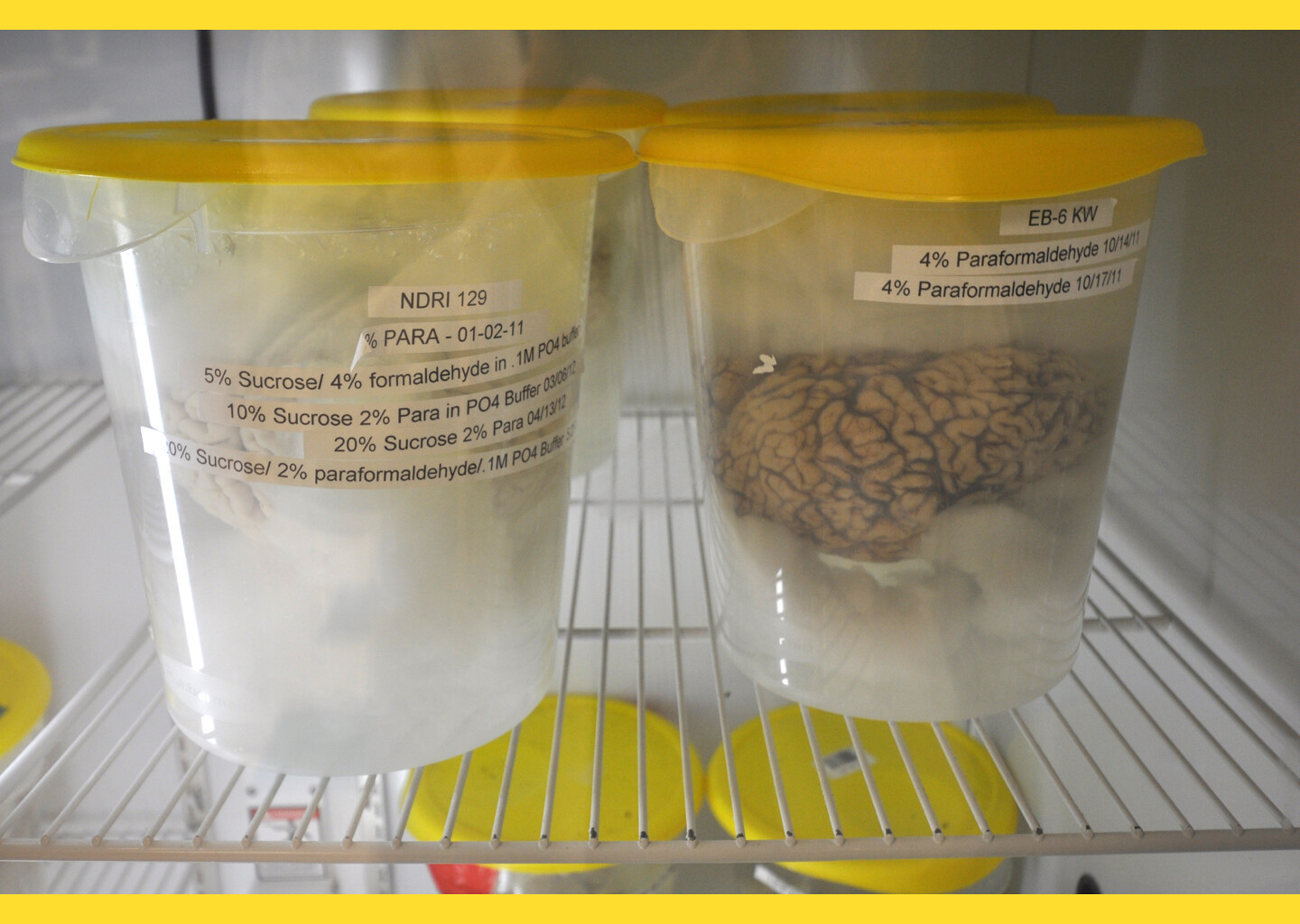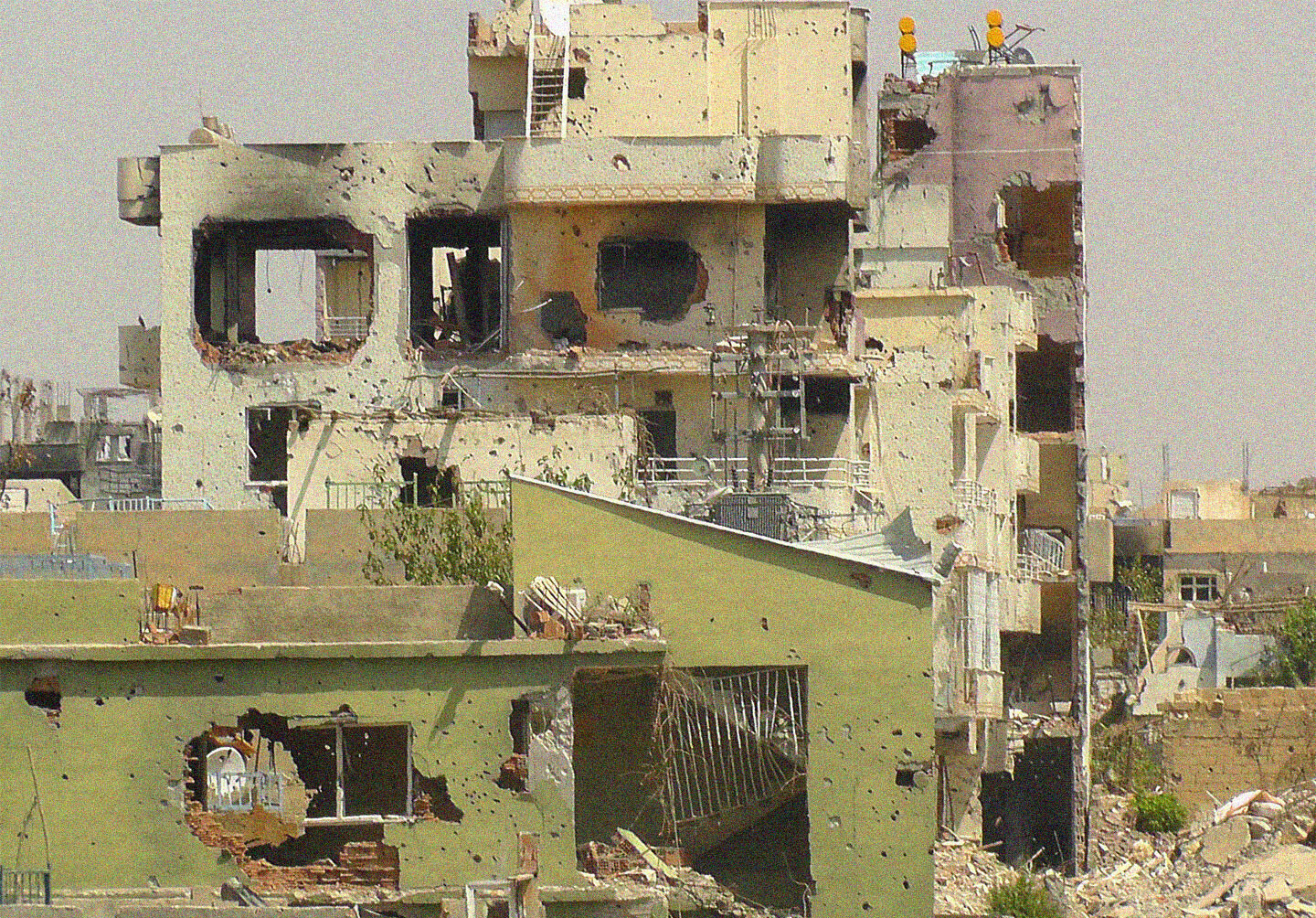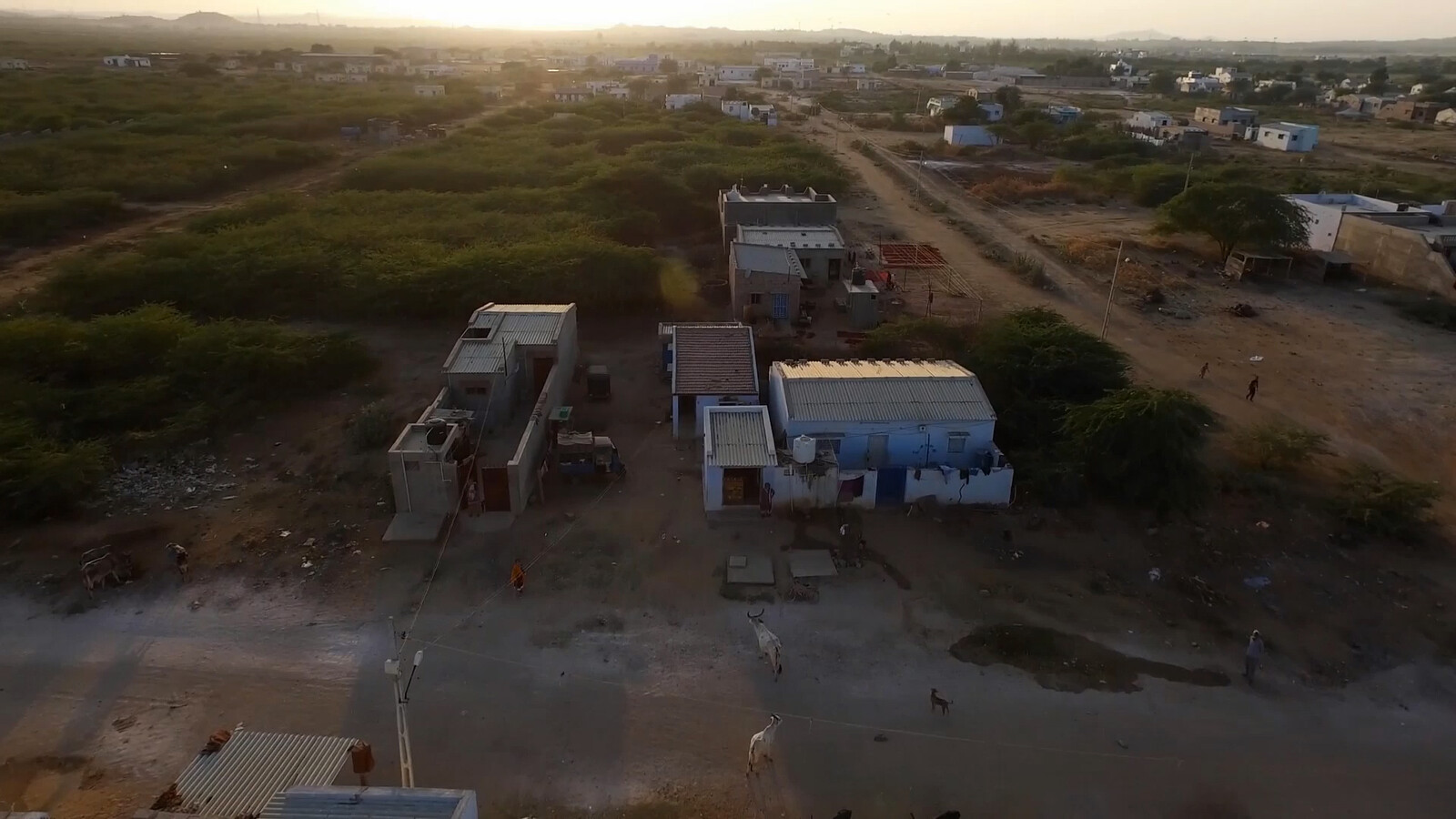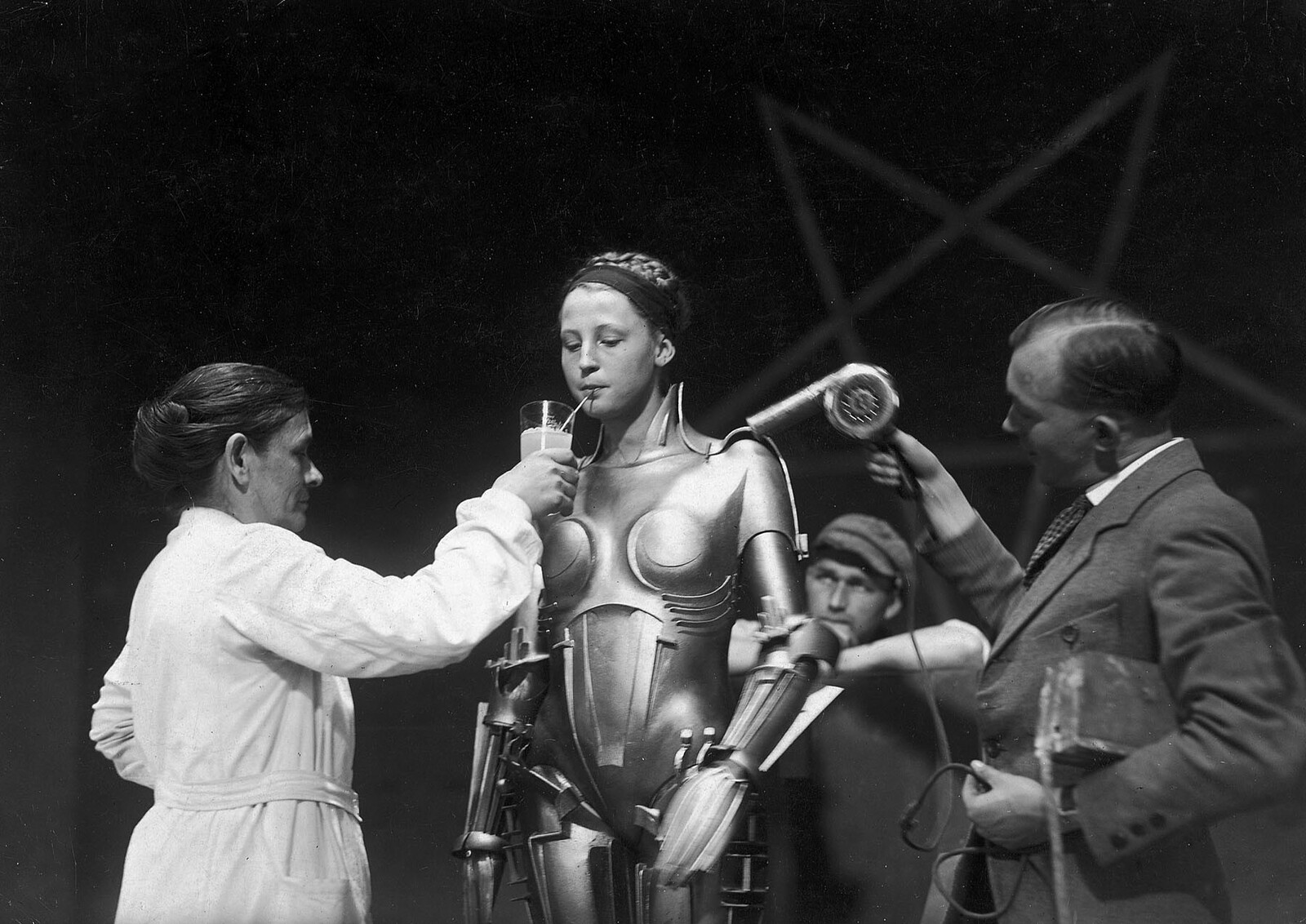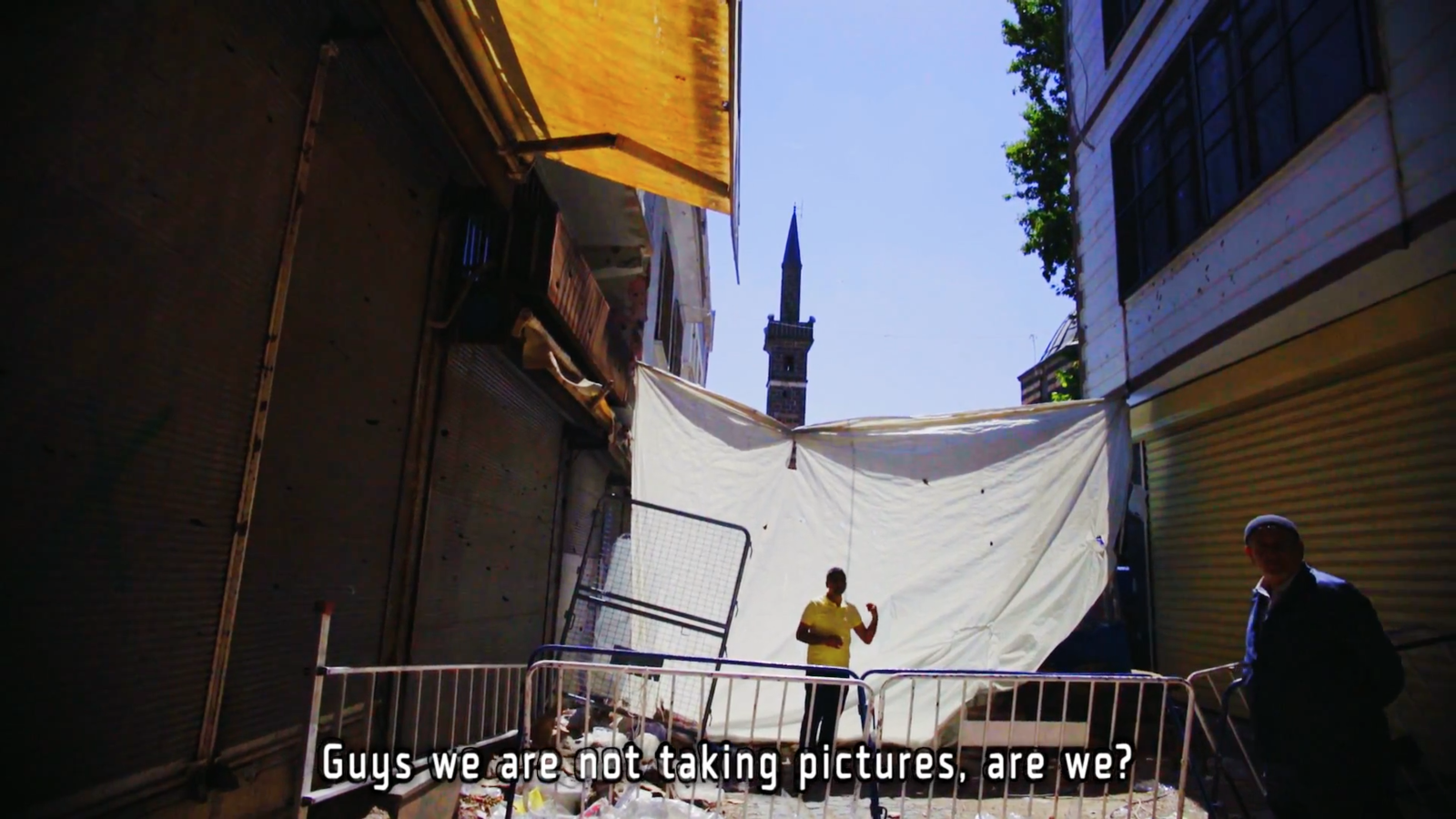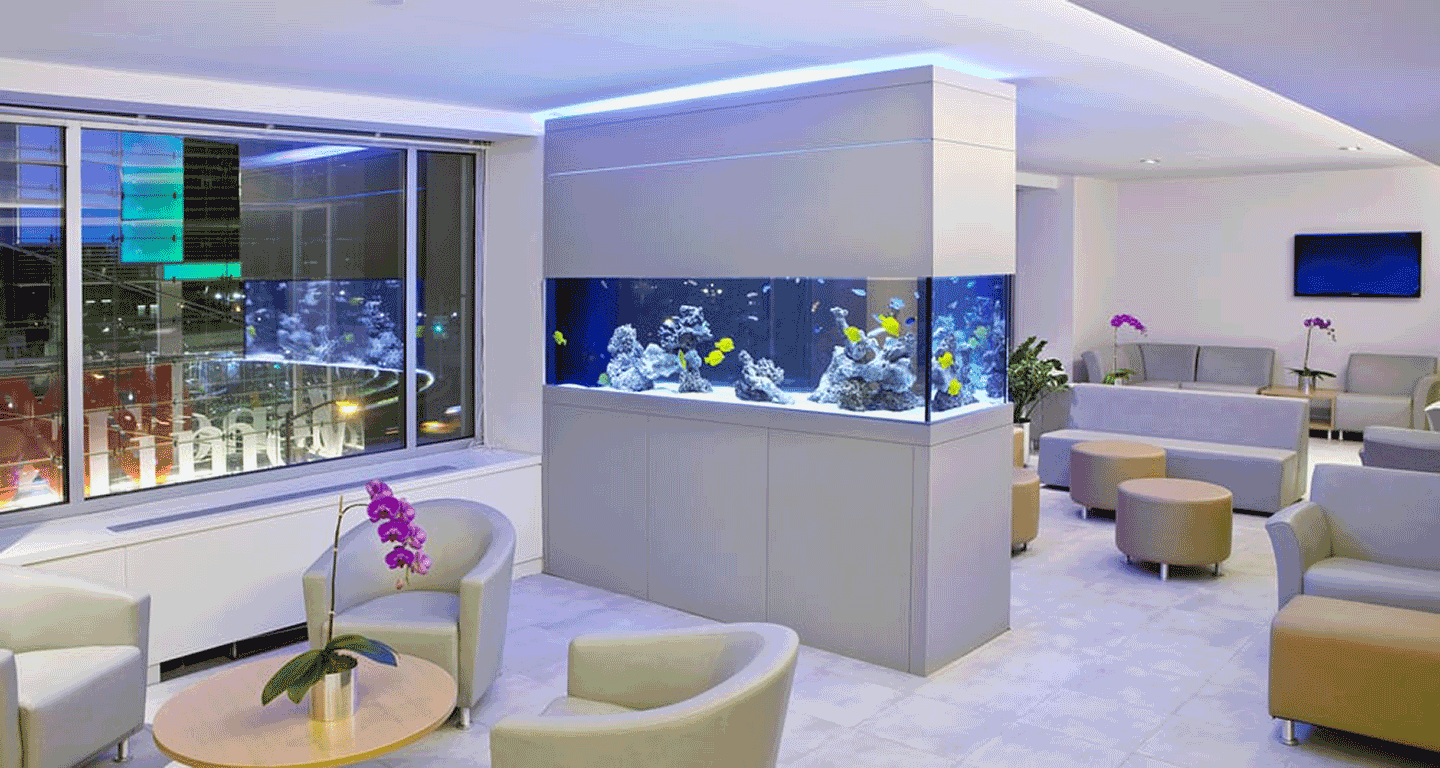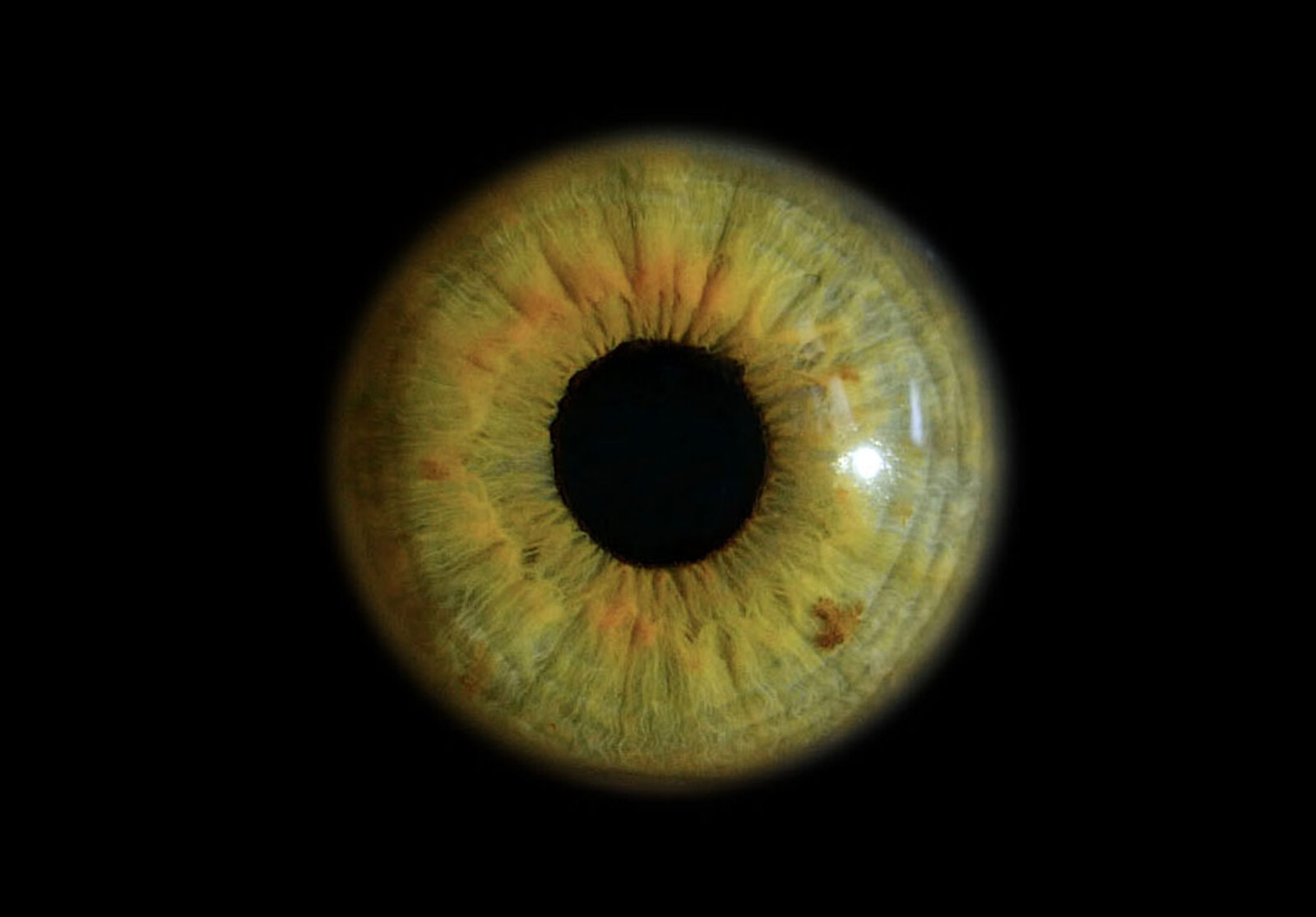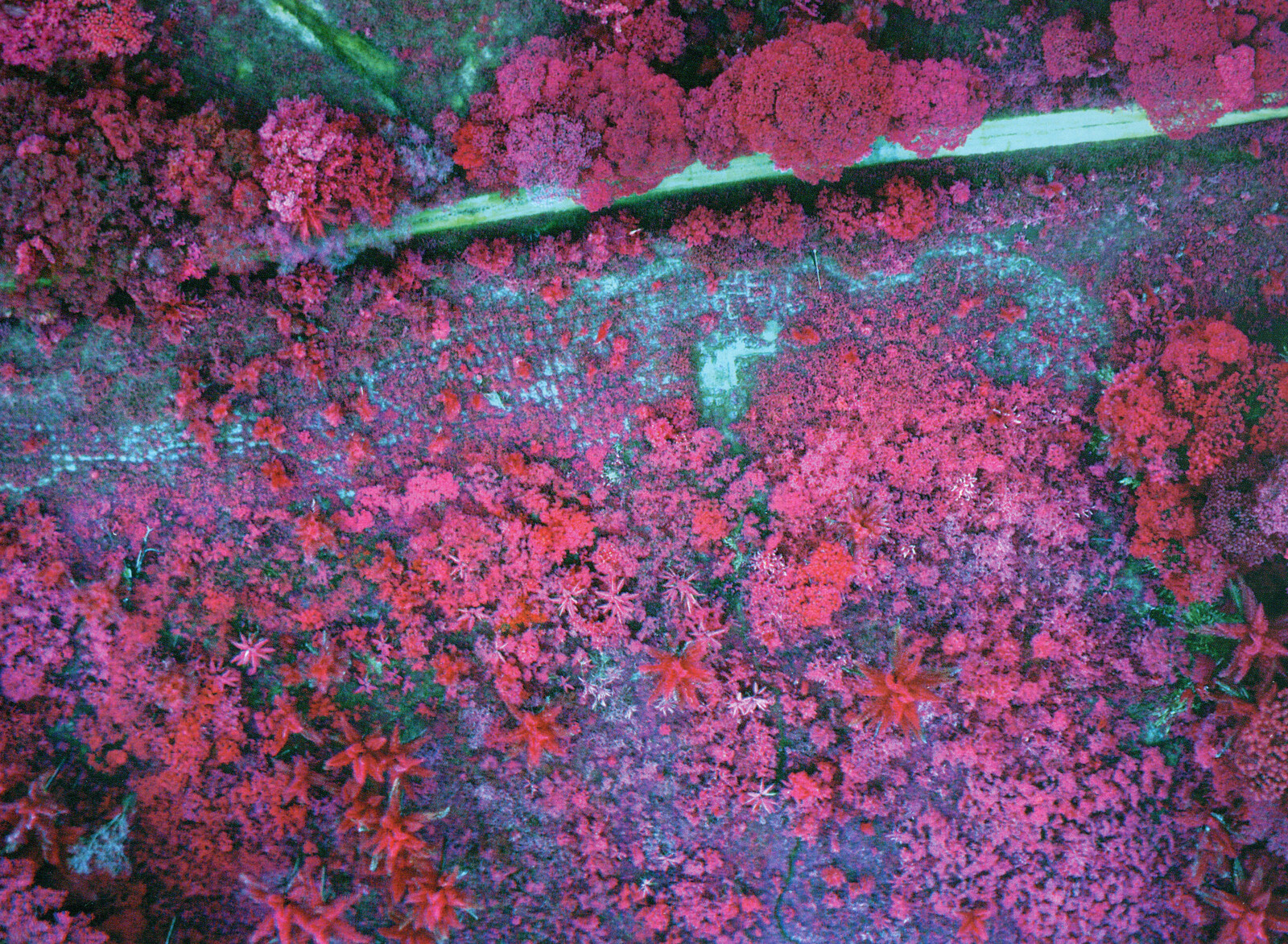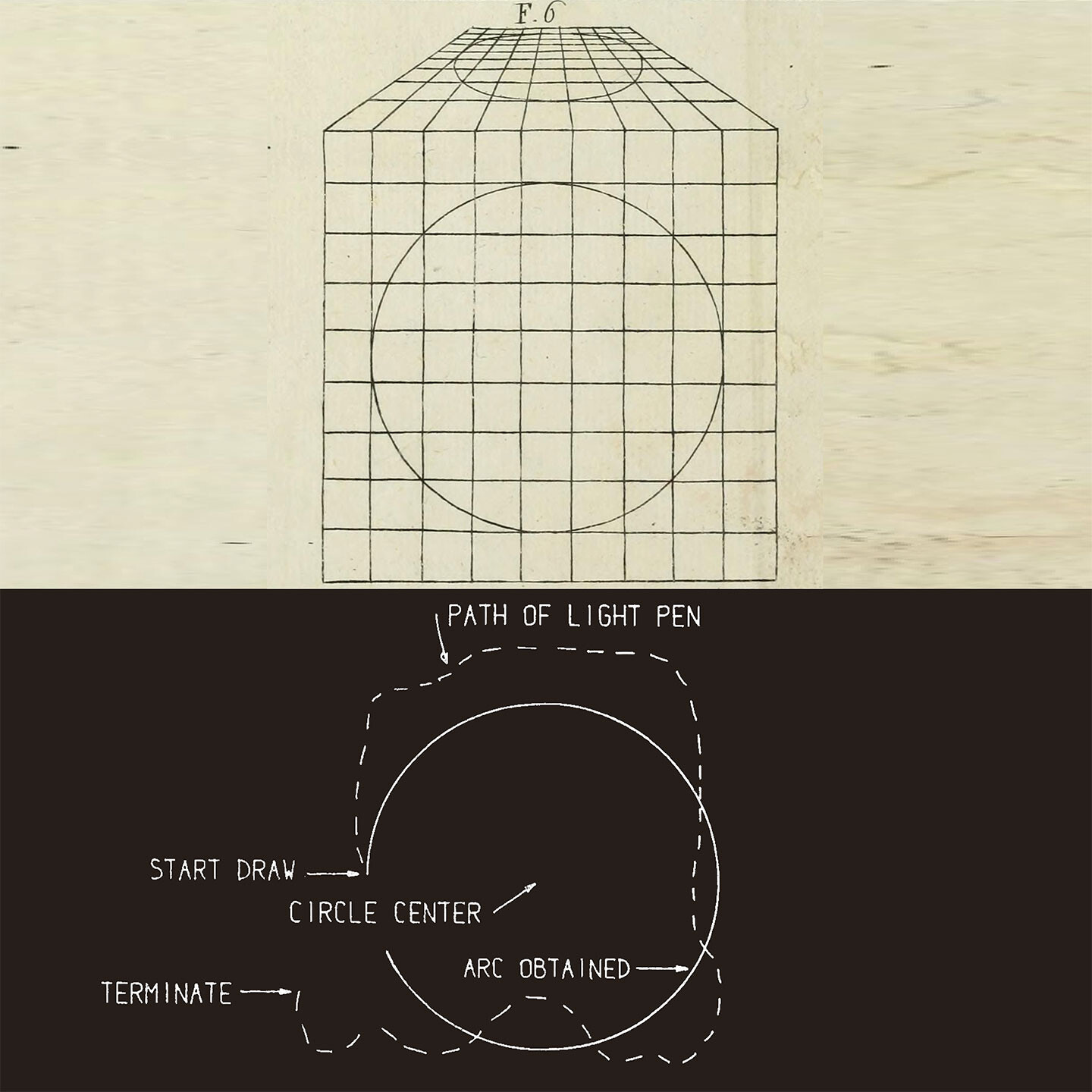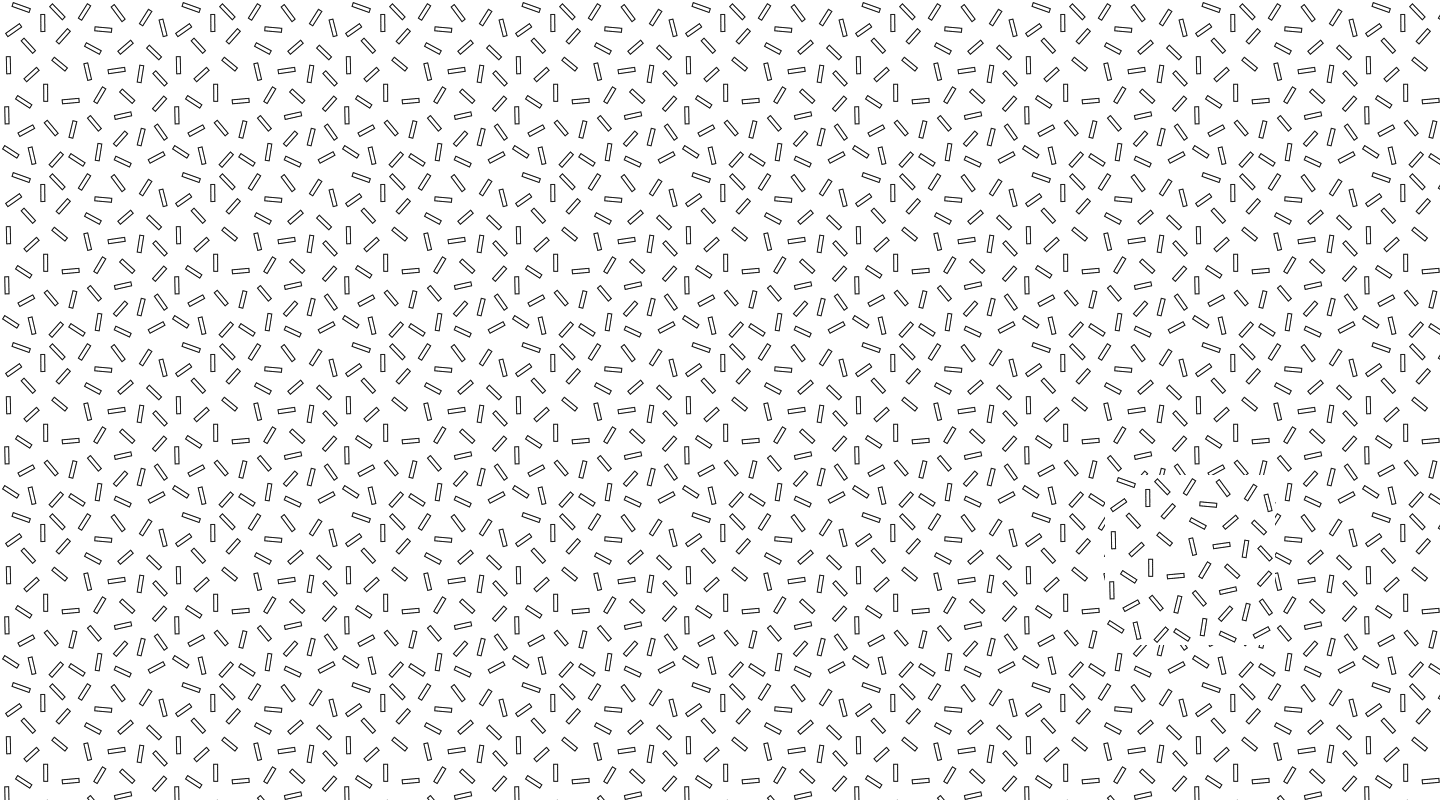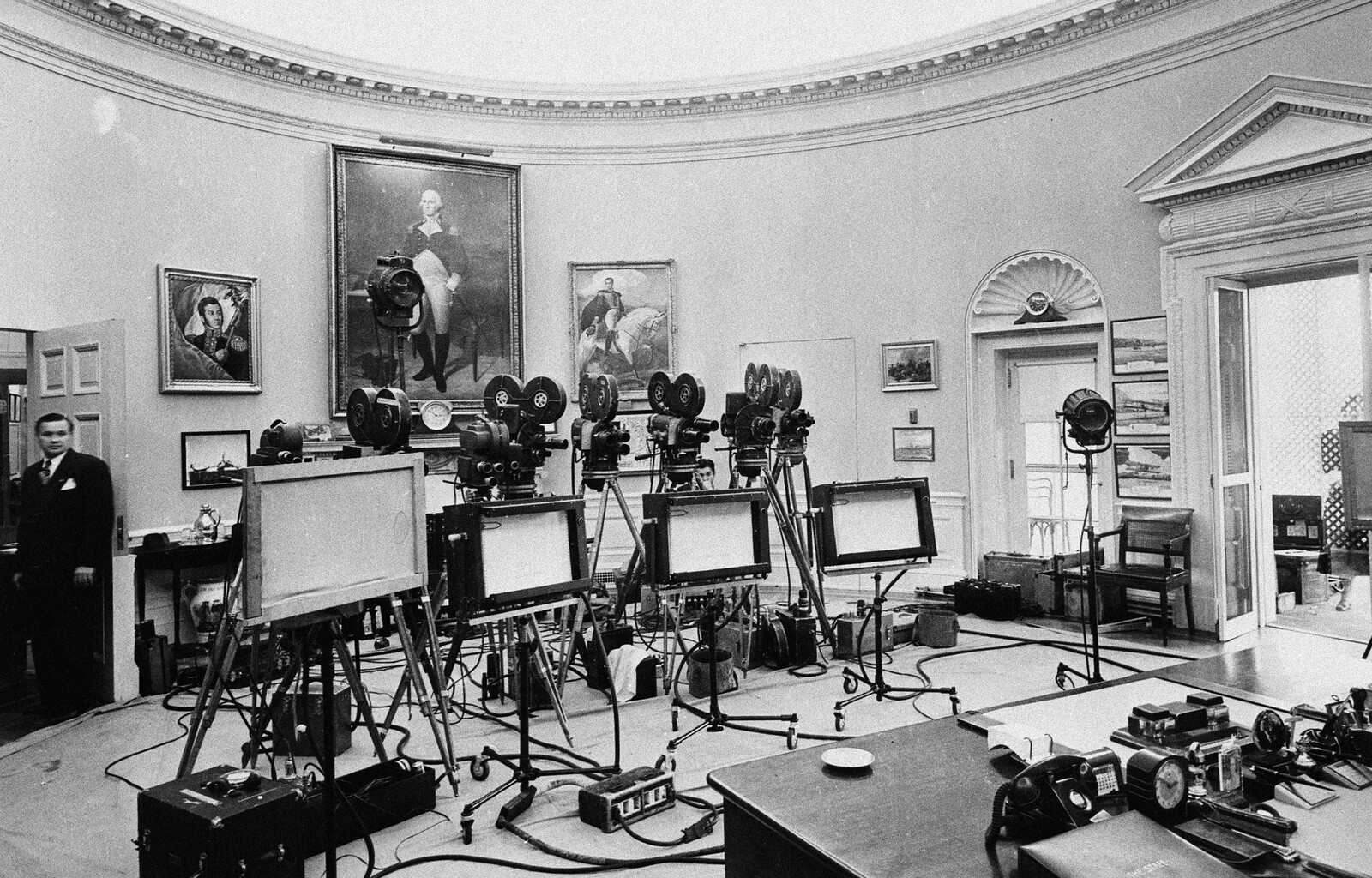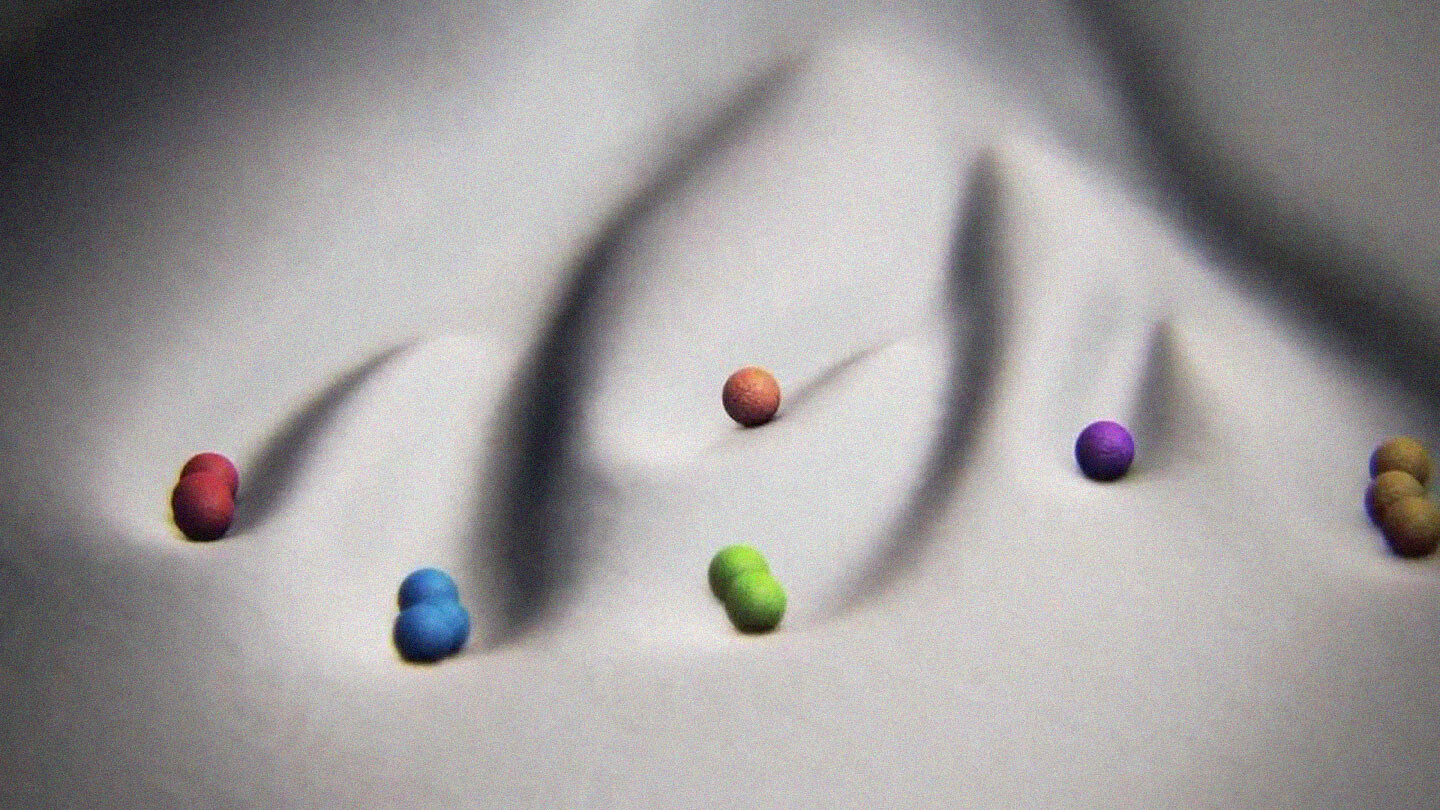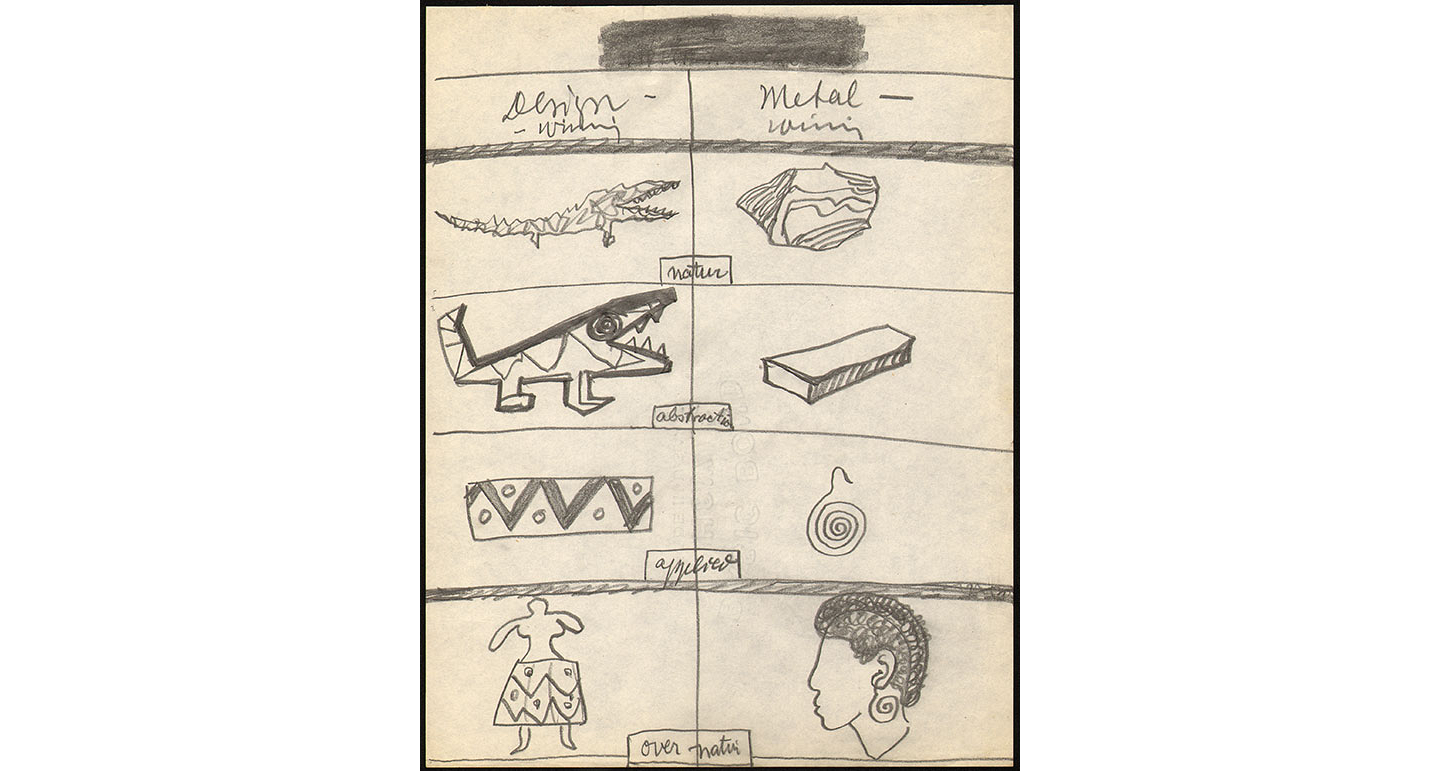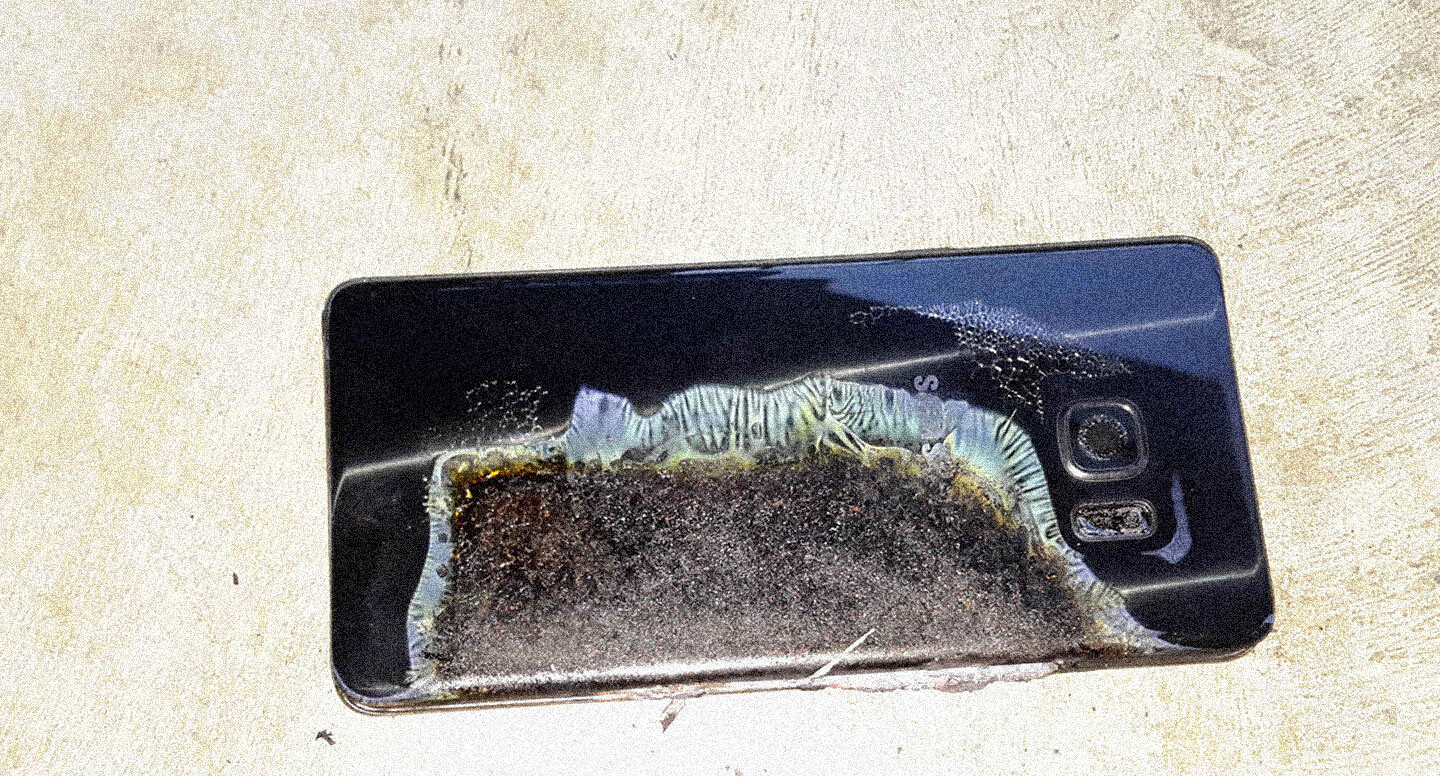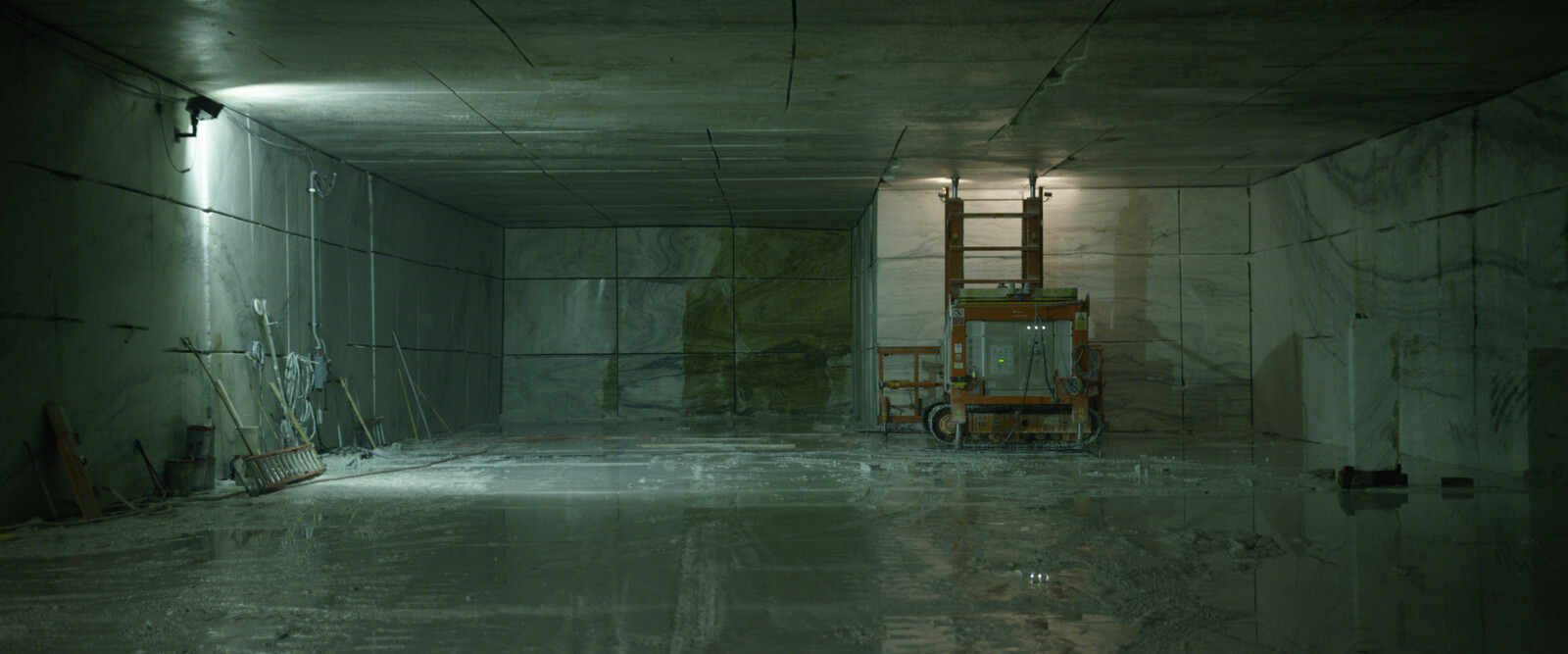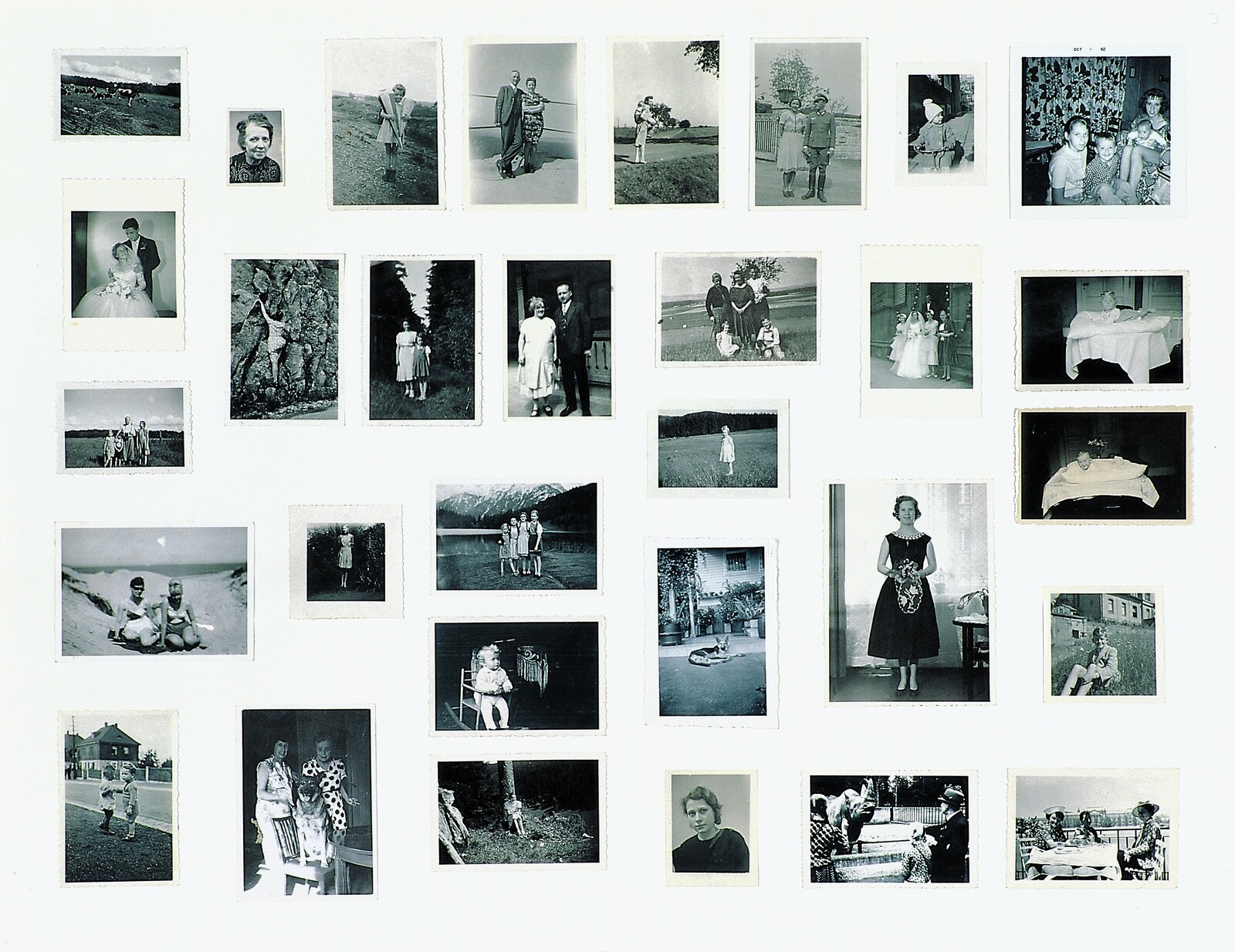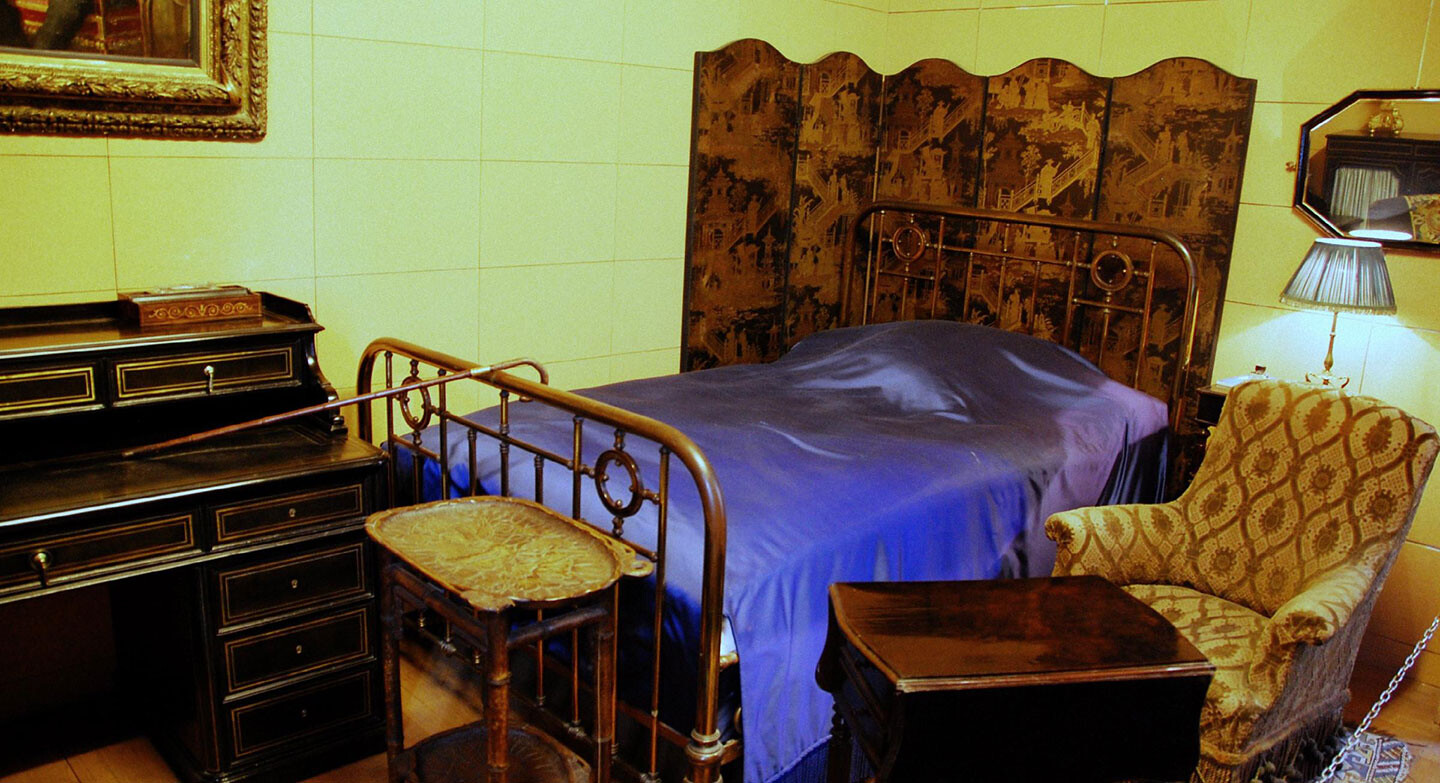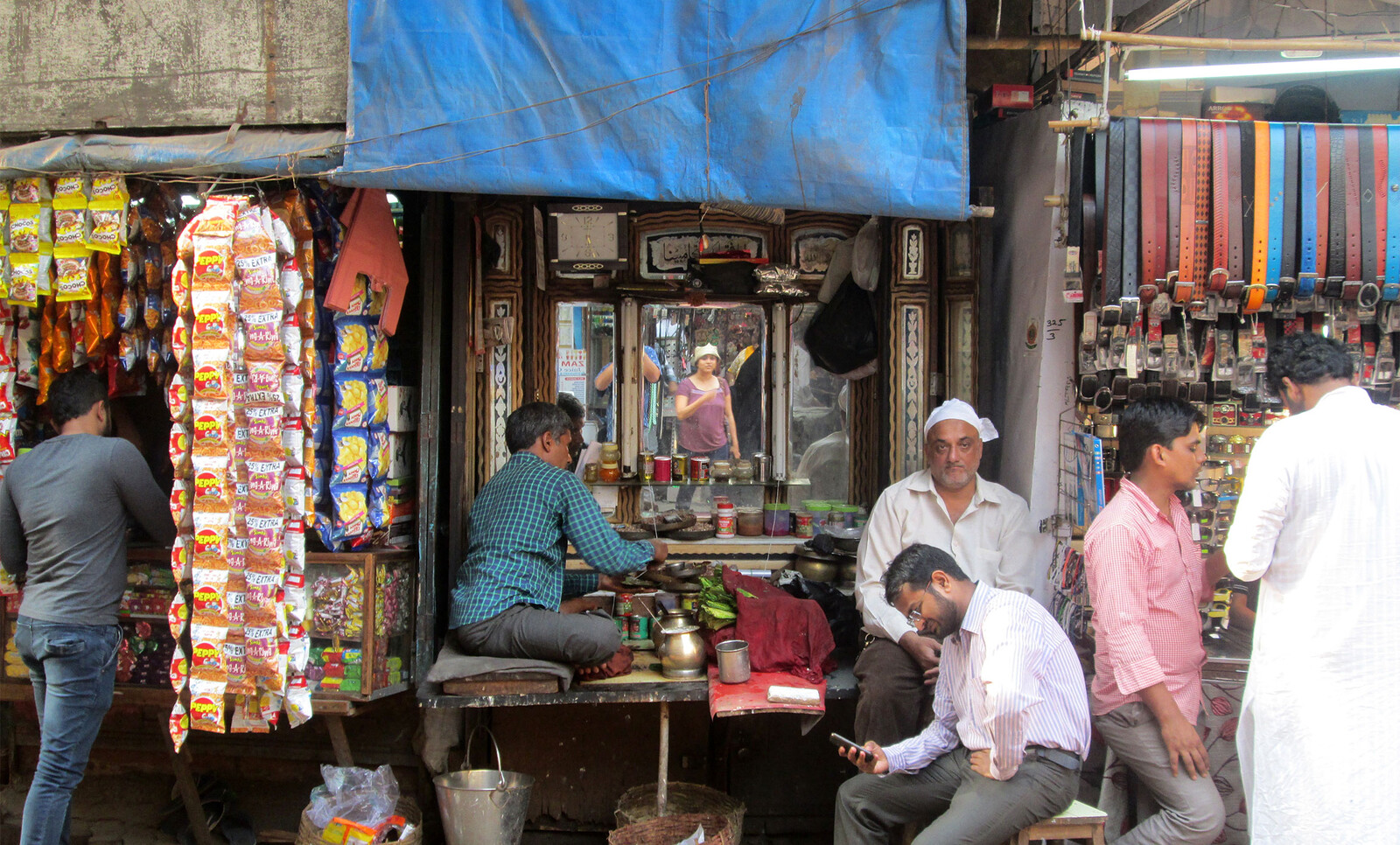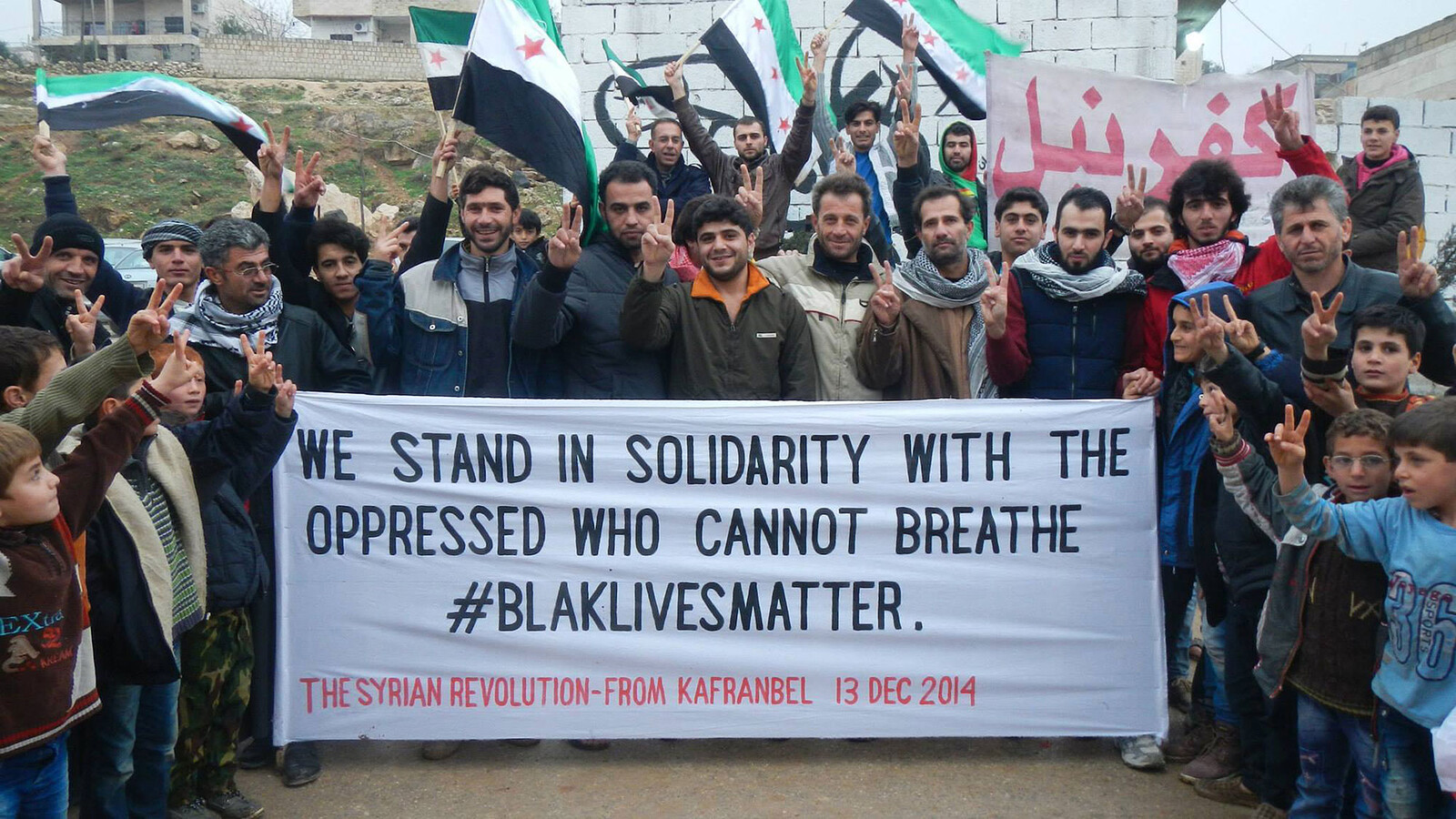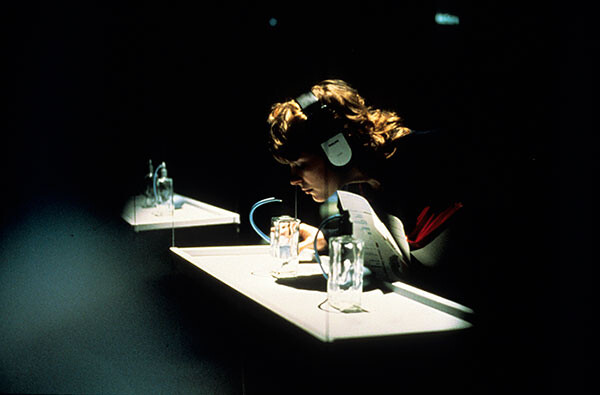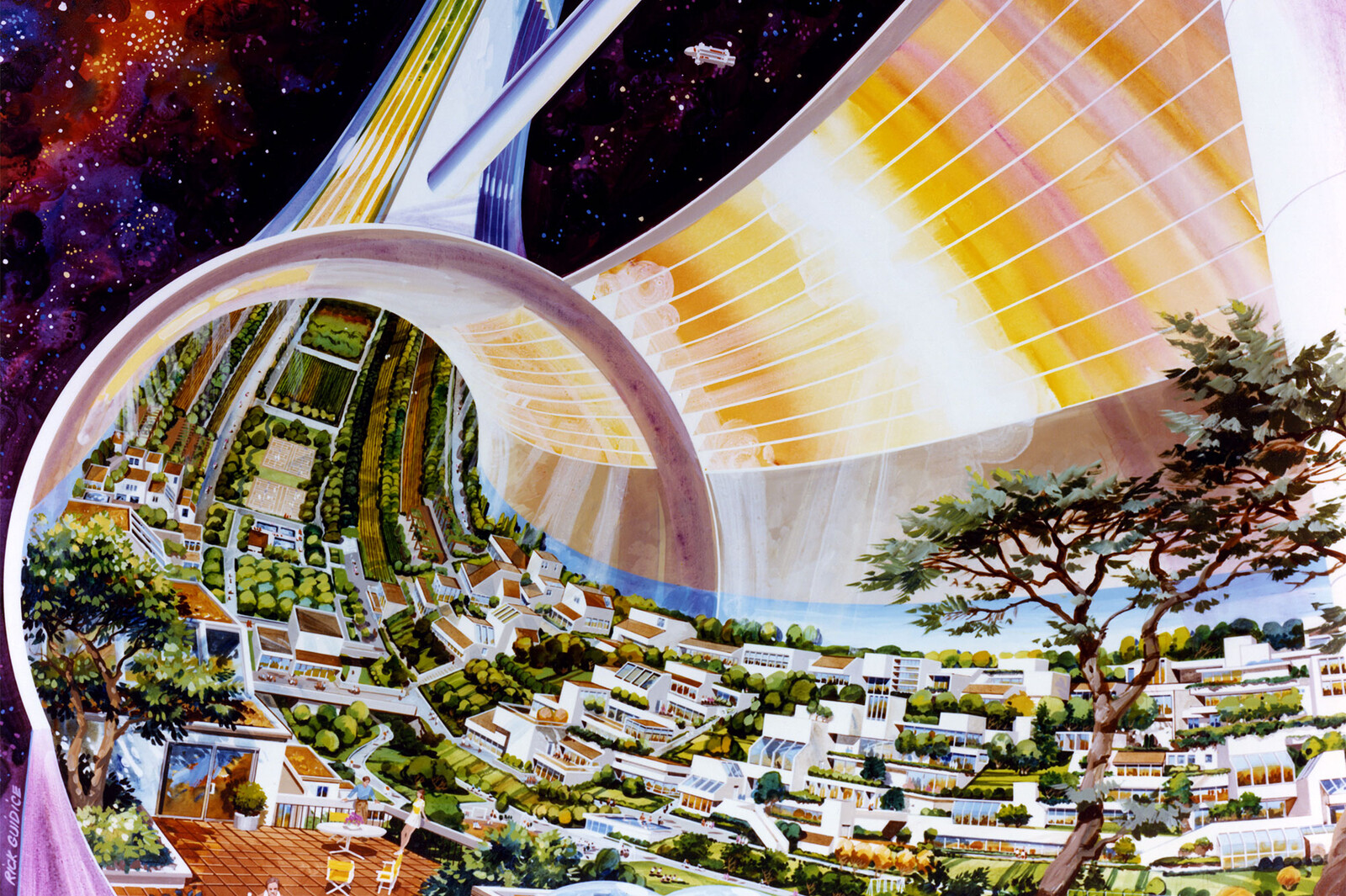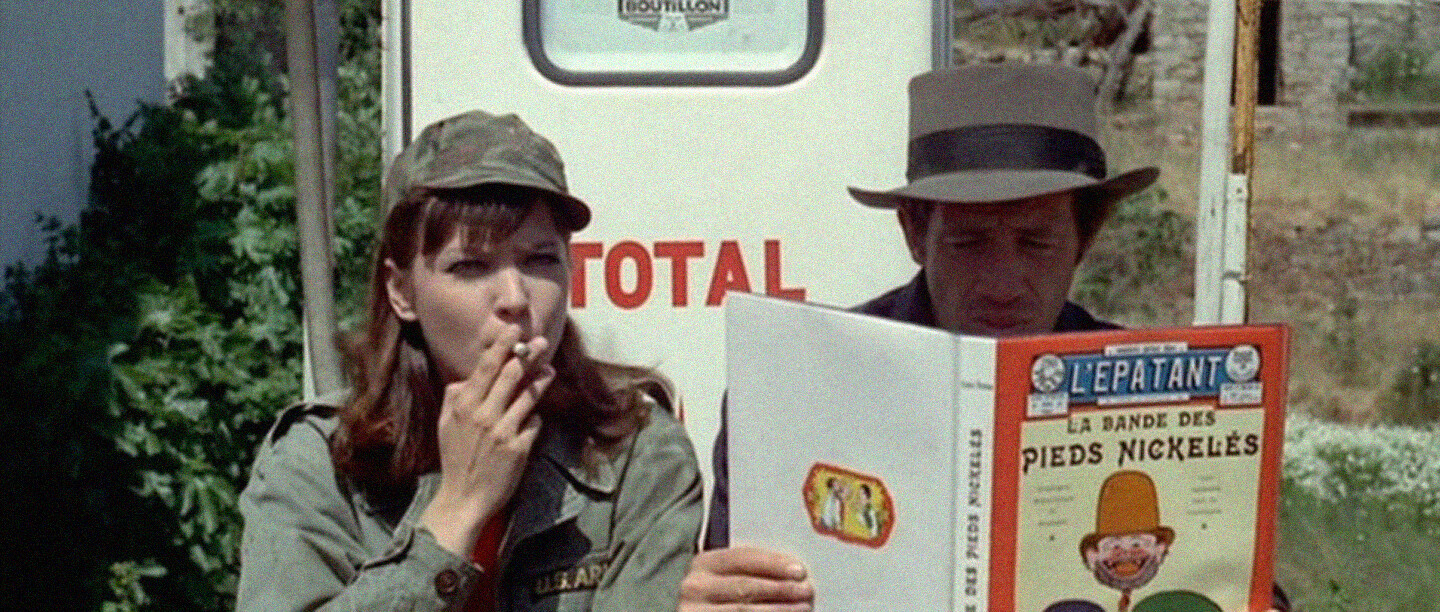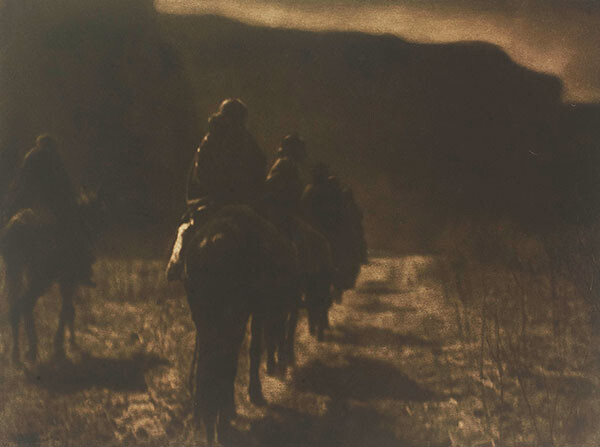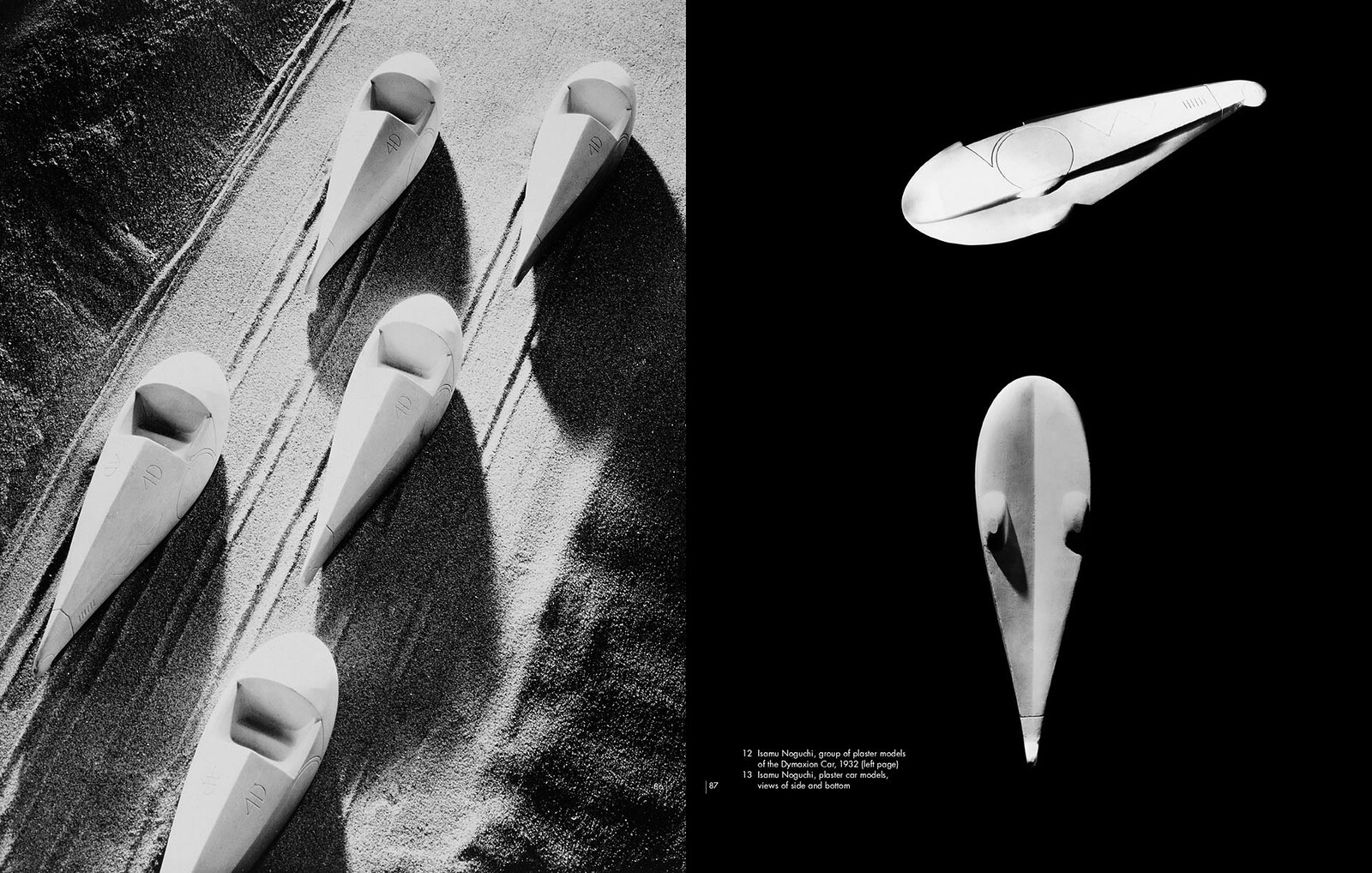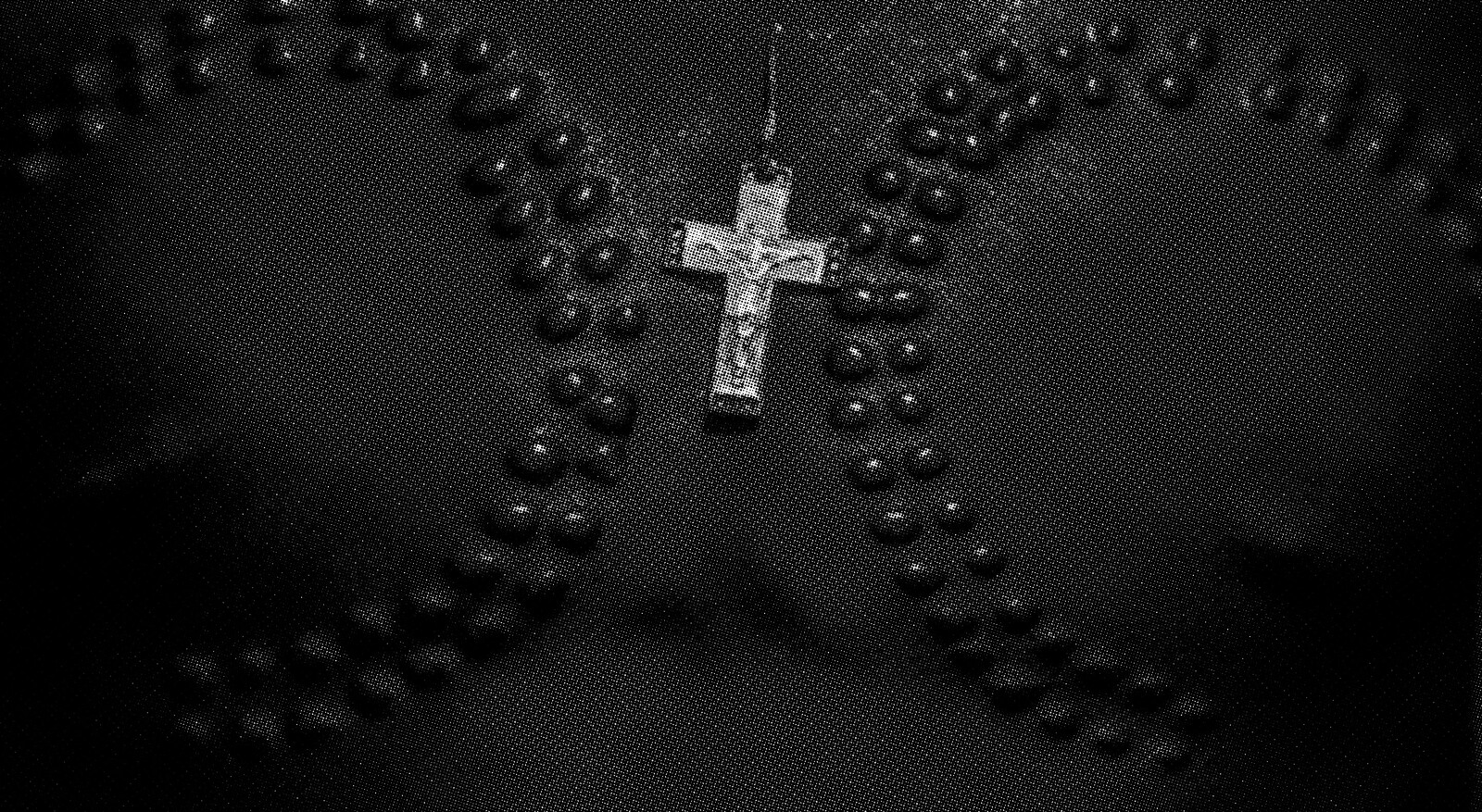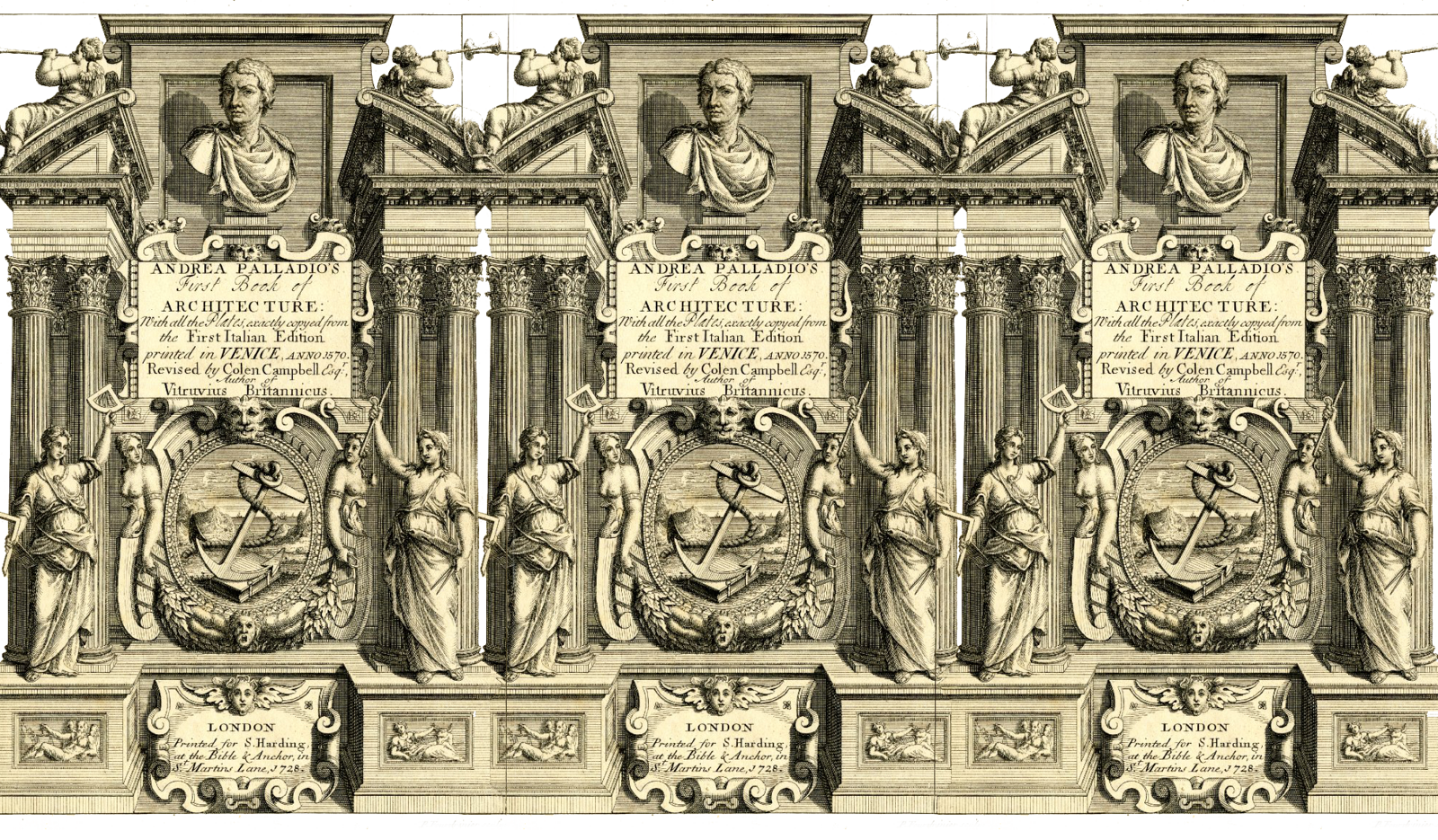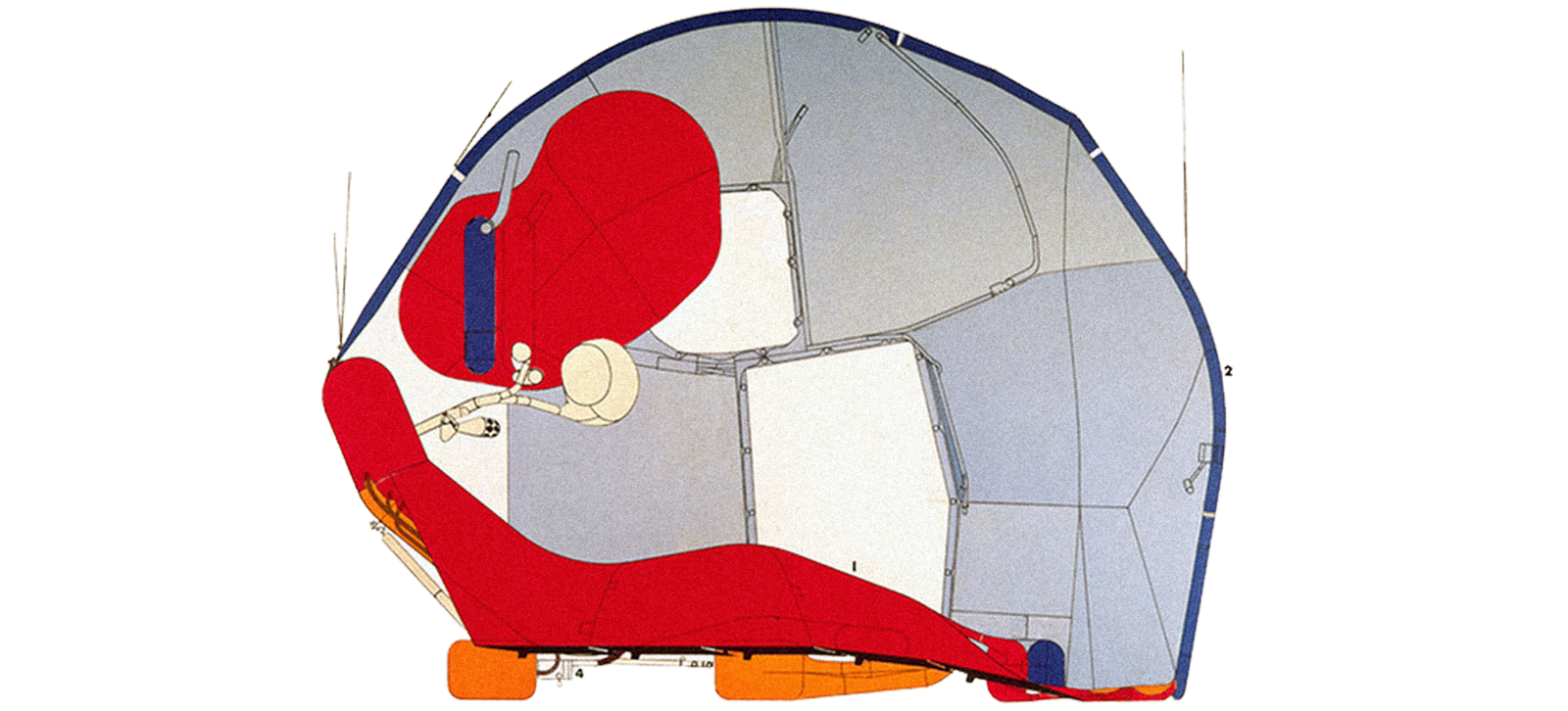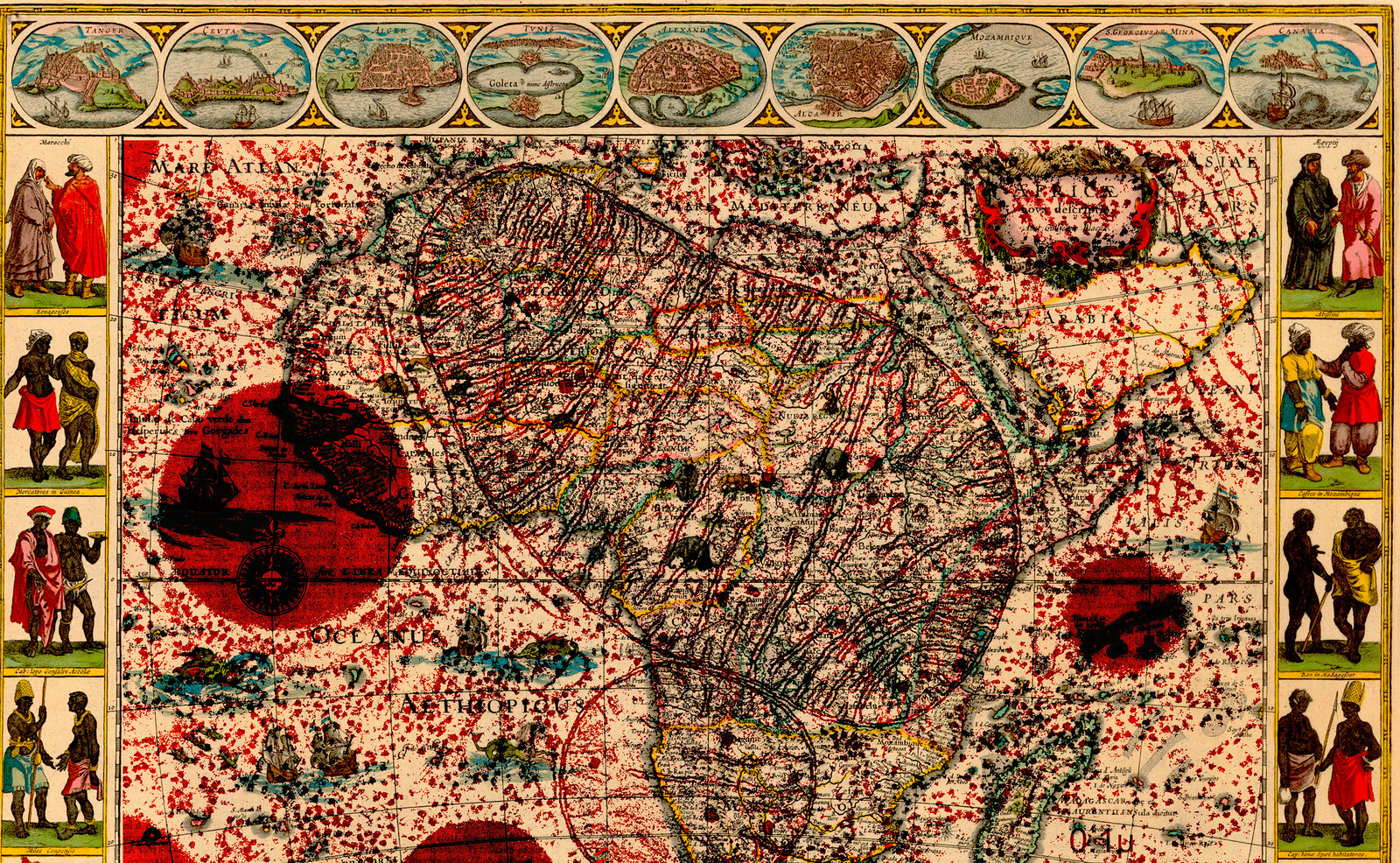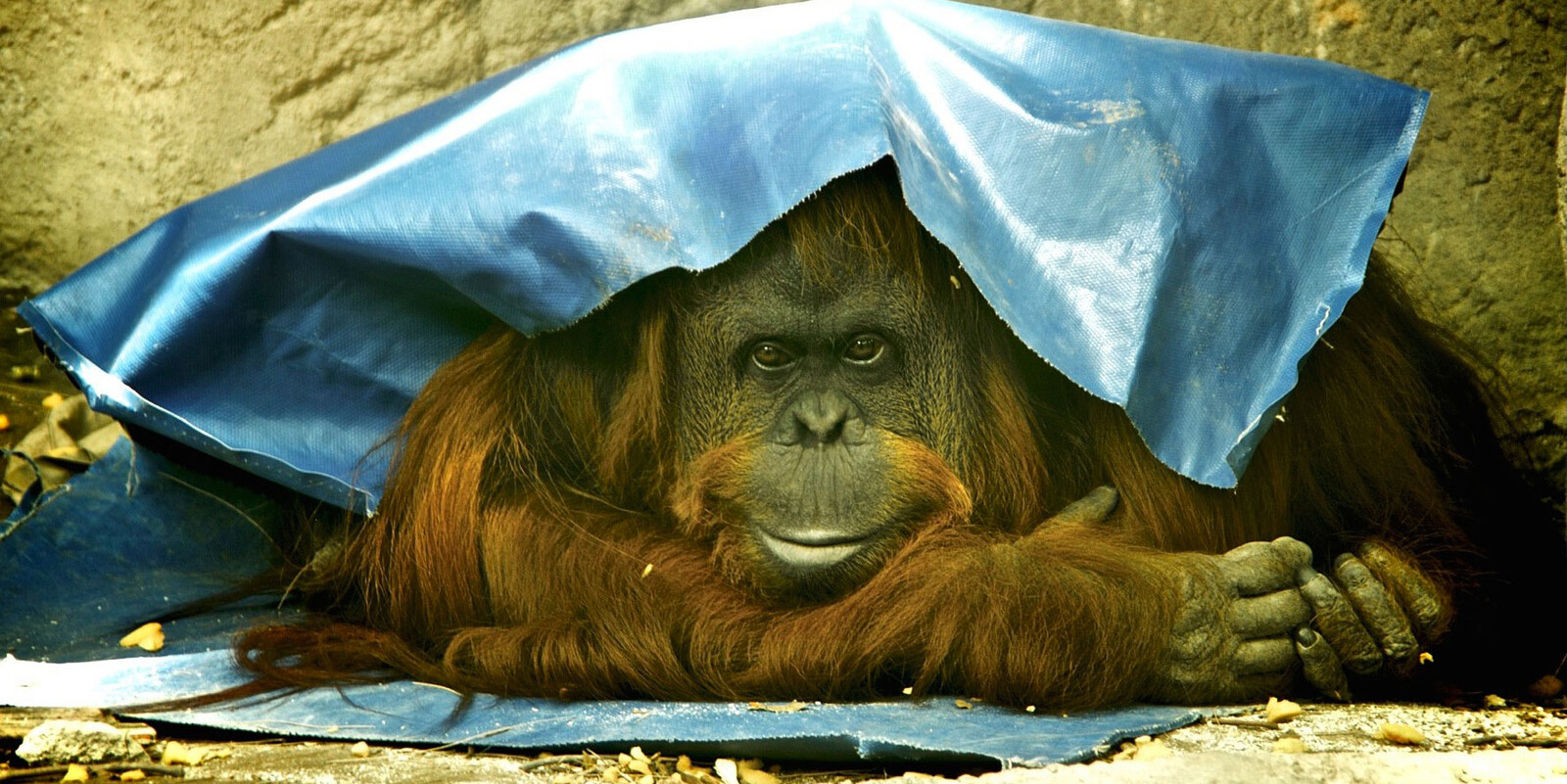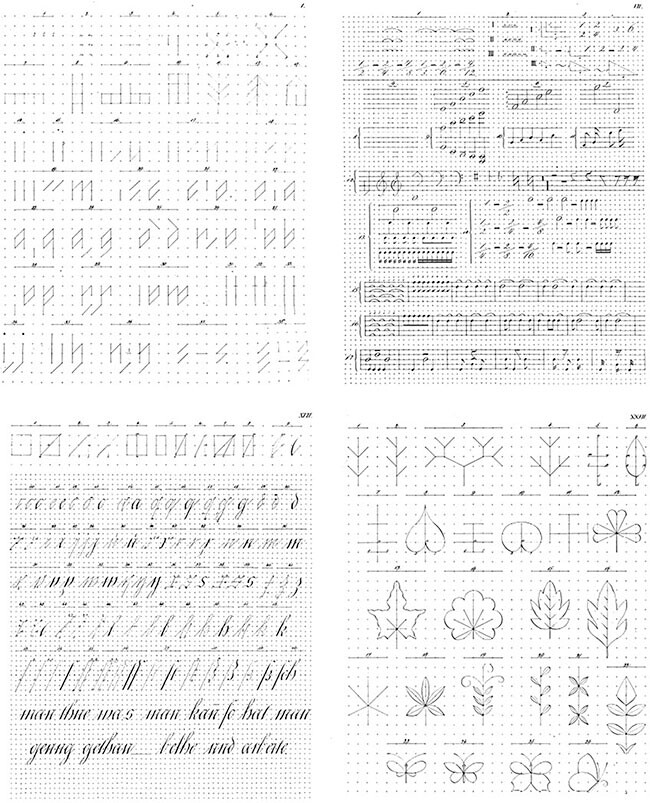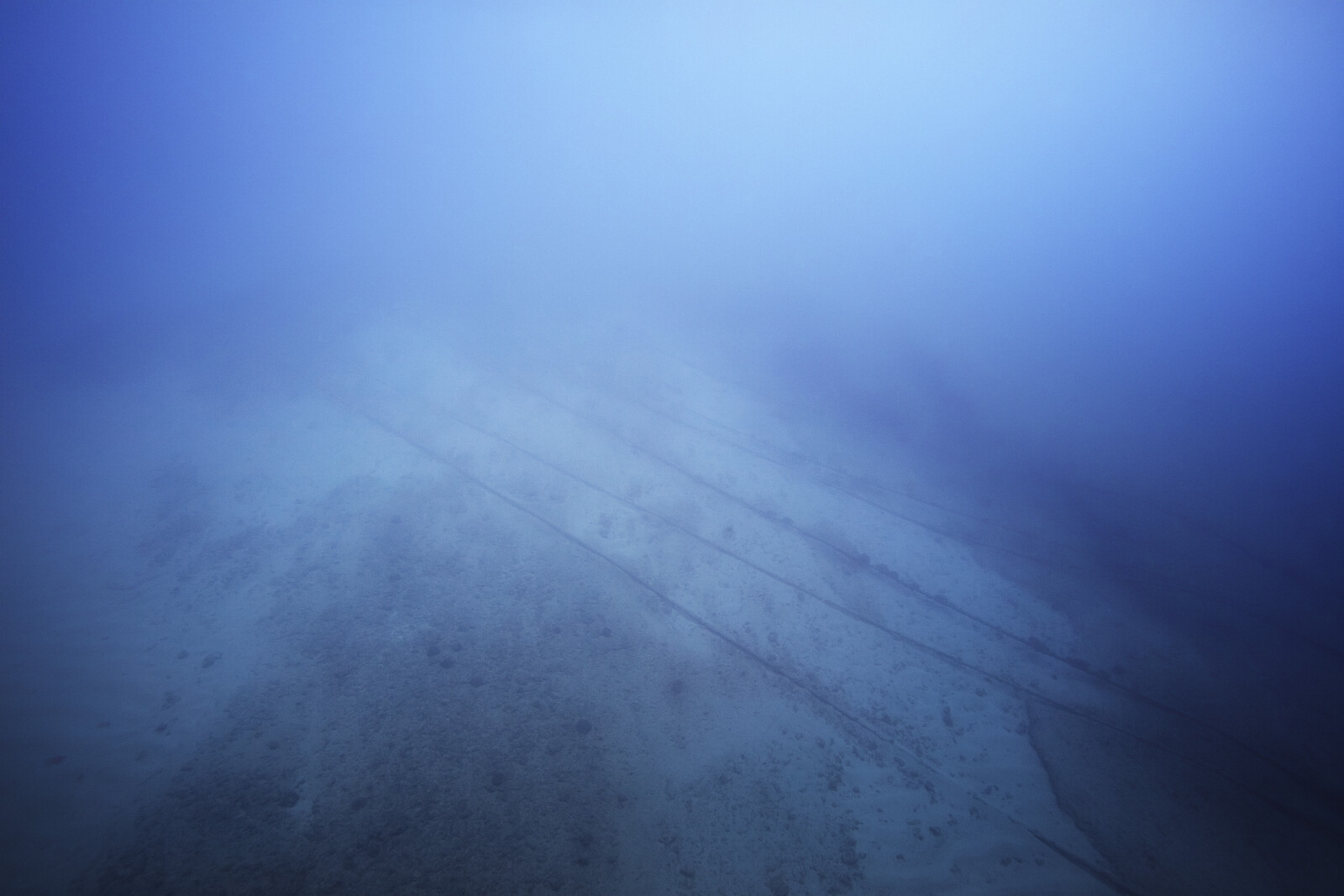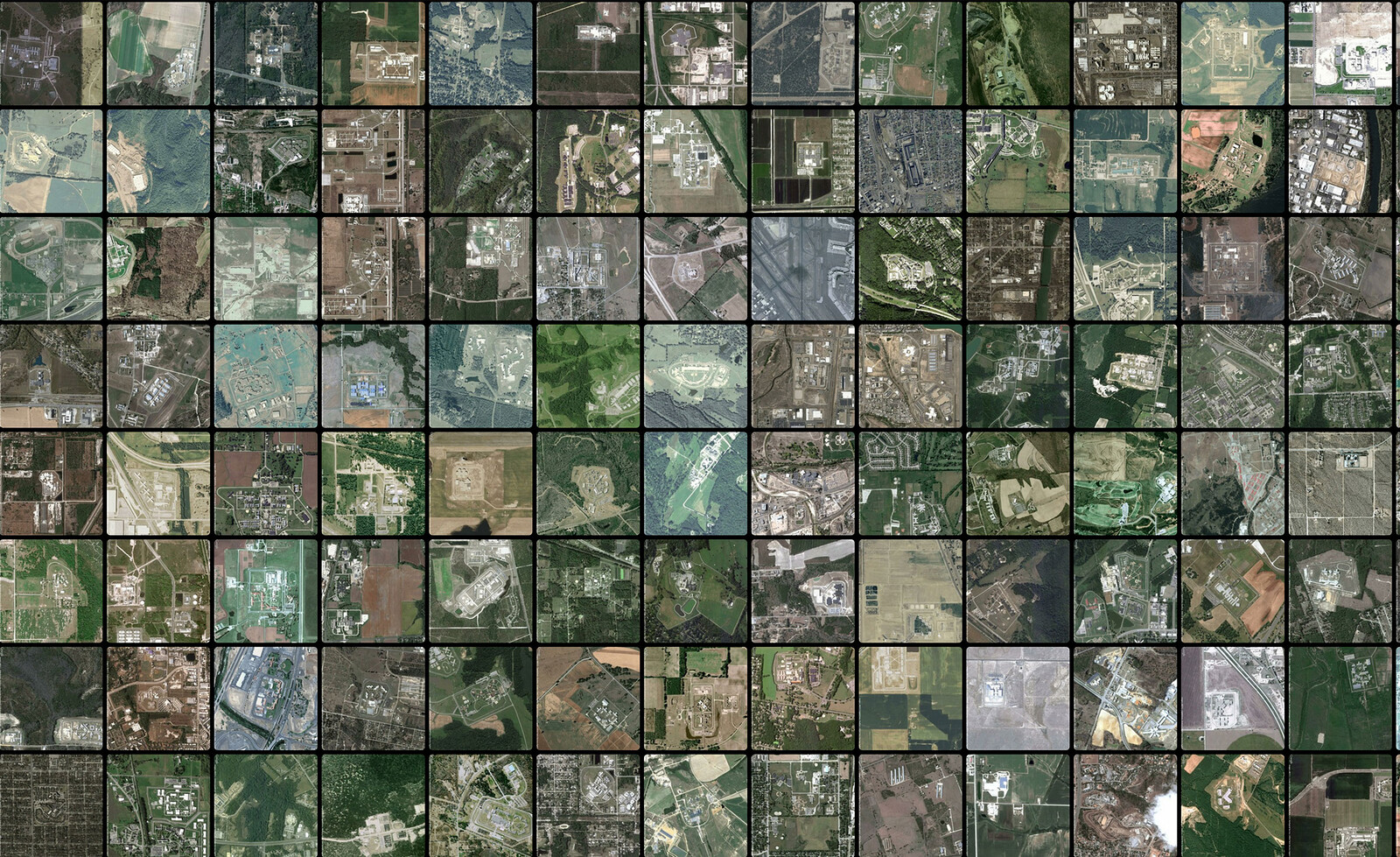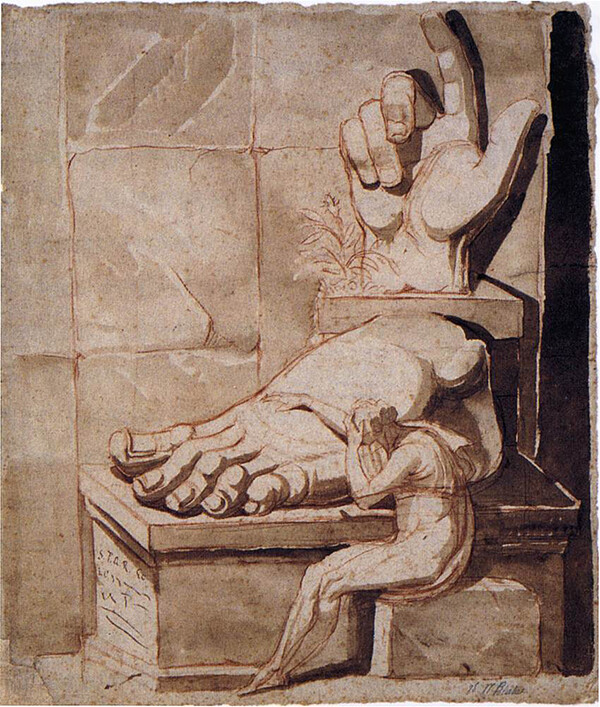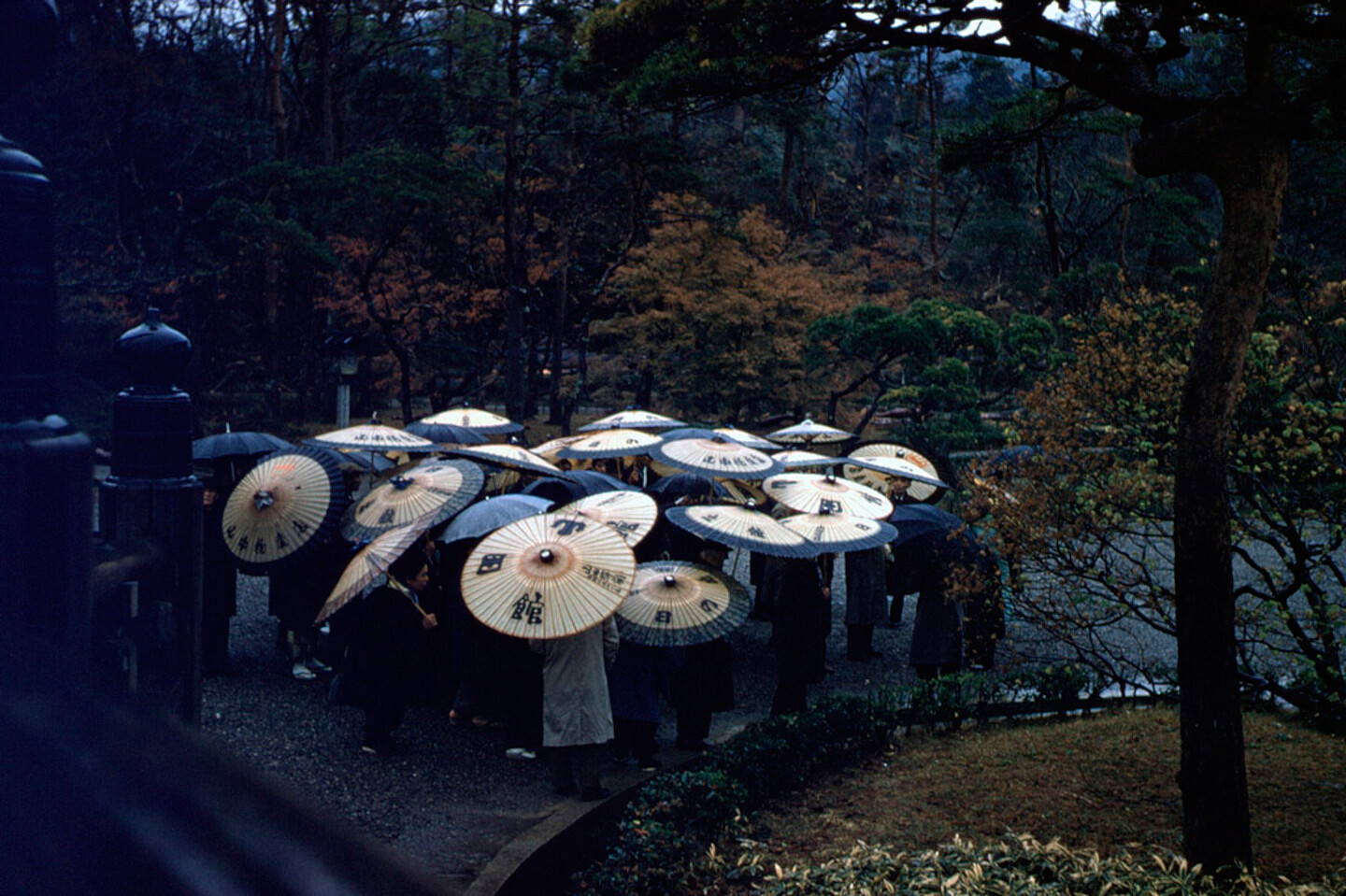The rise of right-wing populist, anti-liberal, and authoritarian political alternatives has brought a renewed attention to architecture. In opposition to broad sections of the German architecture community and construction industry, for whom an “open-arms” culture represents a kind of ethically precious incentive, apocalyptics and integrationists are manufacturing rightist spaces based on increasingly solidified ideological patterns. The German right-wing publisher Götz Kubitschek uses the term “metapolitics” to speak about the extended field “of words, of thought, of style, of books, magazines, and events, of the habitual and the auratic,”1 which, in the interests of a cultural revolution coming from the right, need to be fundamentally changed.
In terms of “architectural metapolitics,” it should scarcely come as any surprise that the Alternative for Germany (AfD) and the National Democratic Party of Germany (NPD), as well as the Freedom Party of Austria (FPÖ), the Front National in France and the Swiss People’s Party (SVP) form a special kind of “coalition of the unwilling.” In willful ignorance of any more complex religious and intellectual history of Europe, the populist right promotes the ideal of a “Judaeo-Christian Europe,” while the far right projects a purely “Christian Europe.”2 “Islam is unreformable,” the allegation these parties conjure into existence, is an intellectual hallucination that can only be described as racist.
Yet the architectural metapolitics of right-wing populists in Europe does not merely manifest in the iconoclastic rejection of mosques and minarets, but must also be identified as “positive,” in the sense that it not only specifies what it is against but also explicitly expresses what it stands for. This other side of the right’s coin consists of specific single-detached residences immersed in the countryside, settlements, castles and manors, downtown reconstruction projects, and last but not least, new monuments.
Homes for the Last, and Not-so Last Germans
There are houses that have scant ambition to be anything more than comfortable daily appurtenances, and others that amount to a political program. The house of Botho Strauß, writer of “The Last German” (“Der letzte Deutsche”) in Der Spiegel in October 2015, in the Uckermark can certainly be put in the latter group.3 In the midst of the media crisis that followed the publication of “The Rising Tide of Tragedy” (Anschwellender Bocksgesang) in 1993, Strauß acquired a country hideaway in the Uckermark situated some fifty miles northeast of Berlin.4 The property consists of two houses, a guest house and a large main residence, both painted in brilliant white and topped with red-tile gable roofs. It is both a real structure and place of the imagination, but also more than that, it is a rural Grand Guignol of the cultured classes.5 Strauß himself had provided the basis for the confluence of dwelling place and philosophical exegesis in 1997 with his book The Errors of the Copyist (Die Fehler des Kopisten), in which he takes a stroll with his son around his house in the countryside and writes, in the tone of the National Democratic Party (NPD): “For five or six years the Germans were intoxicated with their collective existence. As punishment they were obliged to spend a thousand years examining how it could have happened.”6
Strauß’s confluence of countryhouse elegy and German nationalist thinking finds an echo in the metapolitical fusion of rural residence and völkisch ideology operated by AfD politician Björn Höcke, with the main difference being that the writer’s fatalism is replaced by the politician’s militant aggression. In typically alarmist jargon, Höcke (though he is not alone here) has, since the refugee crisis of 2015, been dreading the “dying out of the German Volk” and seeing his party as the “last evolutionary chance for our country.”7 Since 2008, Höcke has lived in the three-hundred-strong village of Bornhagen in Eichsfeld county, on the border between Thuringia and Hessen. According to the investigative enquiries of journalist and sociologist Andreas Kemper, this place plays a central role in the politician’s early writing, which he presumably published under the pseudonym Landolf Ladig in the NPD magazine Eichsfeld-Stimme, where in 2012 a Ladig text appeared with the title “A Village in Thuringia” (“Ein Dorf in Thüringen”), in which he writes: “Do you know Bornhagen? … The famous Hanstein castle perches majestically on the hill above the village. It is thought to be one of the most romantic ruined castles in central Germany. After climbing the castle hill, the historic Klausenhof inn, voted best hostelry in Thuringia in 2007 and 2008, beckons you in. … On the slope across from the inn stand a small Protestant church, an old parsonage, and an old school.”8 The parsonage being referred to at the end here has been owned by Höcke since 2008, where he lives with his wife Monika and their four children. The shingled house can be viewed (as Ladig/Höcke see it) as an anchor point of radical nationalist ambitions; a patch of home turf from which to hammer into the Germans the urgency of a final round of redemptive ejaculations as a means to supply the national community with an “organic market economy.”
Settlements to Counter the “Death of the Volk”
What we can understand about an “organic market economy” may become more clear if we take examples of a few recent “völkisch settlements” that have sprung up in the last few years, primarily in rural areas of eastern Germany, but also to a lesser extent in Bavaria, Hessen, Lower Saxony, and Schleswig-Holstein. Filled with disgust at any kind of metropolitan multicultural way of life, many NPD cadres and AfD adherents seek their salvation in the countryside. In Mecklenburg-Vorpommern, far away from people with immigrant backgrounds, imagined or real, right-wing settlers have a special fondness for rehearsing the “preservation of the German Volk” in extremely low-priced real estate. Initially in the guise of friendly neighbors, they infiltrate clubs, kindergartens, and schools. Their program is familiar, and had, or so it seemed, been consigned to history. Running under the slogan “Blood and Soil,” they are determined—as a “national community”—to rally against what they fear will be the “death of the Volk.” Many of the neo-right settlers—including some rather innocent-seeming organic farmers—hark back to intellectual concepts that came out of the end of the Wilhelmine era and the period after World War I, before they were radicalized by National Socialism and got caught up in its murderous cogs. For example the “Artamanentum,” a völkisch youth movement that romanticized the pastoral idyll, is currently enjoying a renewed popularity among organic farmers on the extreme right. Established in Munich in 1925 with the founding of the Artaman League (Bund Artam e.V.) and intent on the agrarian colonization of “Lebensraum in the east,” it was incorporated into the Hitler Youth in 1934.
The little village of Koppelow, built near Güstrow in the 1930s, was the largest Artaman settlement. As Anne Schmidt of the Amadeu Antonio Foundation sets out in Völkisch Settlers in Rural Areas (Völkische SiedlerInnen im ländlichen Raum),9 neo-Artamans were already proclaiming their intentions back in 1992 with their manual of piety, the Artam-Blätter, which targeted “the cultivation of a life appropriate to the human species, and not simply as a hobby. We wish [to view] the political conditions in our country (the world!) and the environmental situation as a challenge.”10 Around this time, shortly after the country’s reunification, a few neo-Artamans settled in Koppelow again. A couple of villages further east, in Klaber, in the hilly area of Mecklenburg, the attempts of the neo-right to grab land are particularly evident. In a concerted campaign, a stonemason, an artist blacksmith, a bookbinder, a midwife, and others—including many on the extreme right—moved into some empty houses and gradually took over almost all aspects of village life. For the practiced eye it should be easy enough to detect the political persuasion of this group, such as with an Irminsul pillar depicting an image of the world tree in the front garden of the stonemason. Symbolism like this was also used by the Artamans in the 1920s and 1930s as a statement both of their Nordic pagan attitude and against Christianity. At the smith’s house, we can also find references to these mythologies, such as a knife handle bearing the image of Odin together with his ravens Hugin and Munin.11 Schmidt writes that the settlement projects in Koppelow, Klader and elsewhere should not be underestimated and disregarded as a temporary phenomenon, but rather classed as attempts to exert “a long-term influence on everyday culture.”12 Political scientist and investigator of right-wing extremism Andrea Röpke has also recognized all too familiar anti-Semitic statements in the rustic, craft orientation of the group, describing themselves as “creatively” perceptive doers, seeking to differentiate themselves from the image of “money-grubbing, international Jewish financial capital.”13
It is not only contaminated right-wing esoterics and far-right craftsmen with a penchant for hillbilliness that are at work on a neo-völkisch settlement policy, but eloquent urbanites too, as in the case of Udo Pastörs. Since 1999, Pastörs—businessman, clockmaker, professional soldier, and from January to November 2014, party chairman of the NPD—has been living together with his wife Marianne in Lübtheen in Mecklenburg, where the family owns some properties, including houses on the village square, Thälmannplatz. The family used to live in the Benz-Briest neighborhood, in a house on the main street that had been part of a “model village” built under the Nazi Reich, where one of the houses had a swastika on the gable up until 2007, when it was tiled over. At almost the same time, the Pastörs moved a few miles to the south into a villa in the Mecklenburg Elbe Valley Nature Park, a site that could legally only have been built on if a tree nursery was built as well, but the latter never happened. Instead, a stately manor was constructed on a sixty-acre property, with a dead-straight drive lined with German oaks leading seventy yards to the entrance door. The estate lies on a country road with the expressive name Zum Reizen (literally, to stimulate or provoke) and constructed according to a model of a Wehrhof (a fortified structure) from the Memel Territory. It was designed and built by the Lüneburg building contractor Manfred Börm, who had several previous convictions for neo-Nazi activities. Pastörs is currently planning his own personal German model village on his estate; he has already had right-wing youths build a red-brick duplex next to the main house, and there’s more in the pipeline.
Völkische Community Experiences in Stately Homes, Castles, and Manors
Ladig’s (and thus presumably Höcke’s) ode to Hanstein Castle, the fortress towering above Höcke’s parsonage, was already an indicator, an intimation, that in order to develop political dynamism, homes are crucial places where people can gather and rehearse the experience of völkisch community. Having been inscribed in the collective memory as monumental landmarks spanning centuries (not to mention being compatible with national romantic traditions and ideas of corporative, authoritarian social systems), converted sheds, manor houses and castles are particularly apt for this purpose. The Schnellroda Manor in Saxony-Anhalt can be viewed as a Mecca of this neo-right castle romanticism, which since 2002 has been owned by Götz Kubitschek (the journalist referred to earlier) and his wife Ellen Kositza. The estate, which is first mentioned in records from 1208, not only houses the life of the couple, their various animals and seven children, but also the offices of Kubitschek’s far-right publishing house Antaios and his magazine Sezession. Furthermore, it functions as the headquarters of the Institute for State Policy (Institut für Staatspolitik), a body that purports to be both subversive of the existing and supportive of a new, different kind of state, and frequently hosts the likes of Elsässer, Feist, Höcke, Sellner, and many other protagonists of the neo-völkisch movement as guests. The interiors of the estate are dominated by the furnishings of Andreas Paul Weber (1893–1980), a völkisch, anti-Semitic illustrator, comrade-in-arms of politician Ernst Niekisch (1889–1967) and part-time furniture designer. Another example is Kubitschek’s friend André Poggenburg, the AfD party leader in Saxony-Anhalt, who acquired the Nöbeditz estate in 2007, a fief first documented in 1266. The prophecy he made to a local newspaper shortly after acquiring the property might now come to pass: “We’ll really bring life to the farm here. With lots of animals, so that our potbellied pig Rudi, who has already run away several times, won’t feel so alone anymore.”14
The Kubitschek/Poggenburg blueprint of the stately home as a path to becoming animals or pigs can be found in the career of Karl-Heinz Hoffmann, who lived with the paramilitary sports group Wehrsportgruppe Hoffmann, his private army, which at times comprised more than four hundred men. The now seventy-eight-year-old neo-Nazi initially moved into Schloss Almoshof in Nuremburg in 1974, before moving in 1978 to a new location east of Erlangen, Schloss Ermreuth, which had served as a Nazi party Gauführer school in the Third Reich. In 2004, together with his partner Franziska Birkmann, he purchased Schloss Kohren-Sahlis in Saxony, an estate first mentioned in official records in 1551 and previously inhabited by the anti-Semitic poet Börries Baron von Münchhausen, who in 1944 had been included by Adolf Hitler in the “God-gifted list of indispensable writers.” For the upkeep of the estate, which includes a gatehouse, stables, storehouses, a bowling alley, a still, and a rococo park, mostly dating from the eighteenth century, Hoffmann set up the Schloss Sahlis Fiduciary Cultural Foundation (Fiduziarische Kulturstiftung Schloss Sahlis), where in his role as “curator,” Hoffman established an organic farm breeding Mangalica woolly pigs. Hoffmann claims that he is not a Nazi, but rather “a socialist eco-fascist.”15 For his cultural foundation, which was declared a nonprofit organization and populated not only by pigs but also by a right-wing brotherhood, he obtained €130,000 in public funding from the Free State of Saxony, but this did not prevent the Schloss being foreclosed upon. The castle was reported as being up for sale, advertised online under the banner “Live like a King,” with 66 rooms, spread out over a large property comprising 66,666 square meters (16 acres), are offered at a price of €666,666.16
Downtown Areas and Monuments to Another German History
Even though the architectural metapolitics of German right-wing populists and extremists primarily takes place in rural areas—in isolated homes, in villages, in remote manorial estates, castles, and stately homes—it should be noted that rightist spaces are by no means limited to the countryside. The völkisch interventions out in the sticks should be seen as a complement to architectural endeavors that are located in considerably more urban domains. These protean ventures can all be placed at the intersection of architecture and the culture of remembrance in the service of a new Germany, about which architecture theorist Philipp Oswalt once wrote that it dreamed “not merely of another future but of another past.”17
This “other history” can be traced in reconstructions. Even if the vast majority of reconstruction projects in Germany are supported by a rather broad spectrum of parties—it is not only right-wing populist and far-right parties that want to reconstruct—it is still noticeable that the architecture pages of Germany’s neo-right magazines are almost exclusively devoted to issues of reconstruction. In the xenophobic, youth-oriented magazine Blaue Narzisse from Chemnitz, for example, Maximilian Zech advocates for more “beauty and sense of tradition in building design,” which he believes can be discerned in the reconstructed Adlon Hotel in Berlin.18 Even Peter Stephan, one of the most important advocates of reconstruction and professor of architectural history at the Potsdam University of Applied Sciences, seeks to align reconstruction themes with right-wing sections of society.19 For example, with the use of public events and a university research project, he set out to uncouple the history of the Garrison Church in Potsdam, which was demolished in 1968, from what occurred in front of it on March 21, 1933: the so-called Day of Potsdam, when Hitler and President of the Reich Paul von Hindenburg shook hands and thus sealed the disastrous alliance between National Socialist and German national powers.
For many right-wing populists and far-right extremists, the reconstruction of “another” history corresponds with the marginalization of the “one” history. Speaking in an interview with the American station CBN on March 10, 2016, Björn Höcke asserted that “Germans have a one-sided fixation with their dark sides. We have thus developed a culture of guilt that makes it impossible for us to generate a healthy national consciousness, a vibrant patriotism.”20 At the so-called “Kyffhäuser meeting” on June 4, 2016, to which the völkisch nationalistic “wing” of the AfD had sent out invitations, Höcke proclaimed, “A nation that no longer erects monuments but only memorials has no future.”21 What this means in concrete terms is clearly articulated by Höcke’s friend Poggenburg, when he sputters with monumental degeneracy about the “ugly aesthetics” of Peter Eisenman’s Holocaust Memorial in Berlin and without showing the slightest restraint, proposes tearing it down.22 A similar line was taken by the Baden Württemburg parliamentary delegate Wolfgang Gedeon when, speaking on the SWR radio station on June 2, 2016, he stated, “At the heart of the commemorative site there should be something positive. If the [Holocaust Memorial] is somewhere on the periphery … I have nothing against that.”23
Metapolitics: A Boomerang
New monuments that should no longer be memorials; reconstructions of “another” history; revitalized castles; “pure völkisch” settlements; isolated country houses for the “last [and not-so-last] Germans.” Rightist spaces all make one thing clear: particularly in the political context of German right-wing populists and far-right extremists, well-intentioned distinctions between the “apolitical private sphere” and the “public space of politics” seem deeply questionable. In the now-discontinued neo-right magazine Criticón, Karlheinz Weißmann, Kubitschek’s former strategic adviser, has written that metapolitics is an “occupation of areas in the pre-political realm.” However, “meta” does not just mean “beyond,” but also “amidst.” While politics certainly includes the deeds of the activist subject along with the usual suspects of parliamentarianism and statism, metapolitics refers to the thinking that guides politics in action.24 If we translate this to the rightist spaces described above, it means that anyone actually implementing a völkisch ideology in how they dwell, live, and work no longer resides in the pre-political realm of a metapolitics but is clearly cultivating a political praxis.
Quite justifiably, there was considerable public indignation—and not only among right-wing populists—when, on May 1, 2016, the antifascist web portal Indymedia published the names, private addresses, and cellphone numbers of around two thousand people who had taken part in the AfD party conference in Stuttgart. This sensitive information is still freely accessible online. Those who lament the loss or violation of privacy in this case operate with a reductionist understanding of metapolitics, labeling an aesthetic, stylistic, cultural world of the everyday as not-yet-political; yet it is exactly the people like Kubitschek, Weißmann, and other right-wingers whose details were released who effectively operate a political praxis using just these aesthetic, stylistic, cultural resources. Thus, all the right-wing talk of metapolitics might turn out to be a boomerang. What began with the demonstrations in front of Höcke’s house in Bornhagen in May 2016 (though they were legally blocked) or in Schnellroda in September of the same year (which were carried through) should set a precedent: the private residence that obeys a völkisch housing ideology is subject to become the object of a broader political protest.
Götz Kubitschek, cited in Liane Bednarz and Christoph Giesa, Gefährliche Bürger: Die Neue Rechte greift nach der Mitte (Munich: Hanser, 2015), 69.
A Swiss popular initiative led by SVP politicians has been rallying against the building of minarets since 2006 and, with the help of a poster (designed by the Swiss-based German graphic designer Alexander Segert) that depicts minarets as missiles, declares Islam to be incompatible with Swiss values. Front National has mimicked this Swiss campaign and uses it to suggest that France and Islam are irreconcilable. FPÖ politicians repeatedly seek to block the building of mosques (also involving Segert in their campaign). AfD, as happened at the 2016 national party conference in Stuttgart, included the statement “Islam is not part of Germany” in its manifesto.
If there was any doubt as to Strauß’s right-wing leanings, after publishing “The Last German” (“Der letzte Deutsche”) in Der Spiegel in October 2015, there can be no longer. In it, Strauß makes statements like: “I would rather live in a dying but vital nation (Volk) than in one that is being rejuvenated by being mixed together with foreign peoples, primarily on the basis of economic and demographic speculation.” In line with this, he concocts stories about “the country being inundated,” before concluding with grudging fatalism, “The immigration of uprooted persons will eventually lead to the end of the nation and with it any national literature. Anyone who loves these things and cannot live without them will thus put their only hope in a reinvigorated, newly emerging ‘Secret Germany.’” Botho Strauß, “Der letzte Deutsche,” Der Spiegel 41 (2 October 2015), ➝.
Within Anschwellender Bocksgesang, Strauß states: “in our liberal-libertarian self-centeredness” we no longer understand “that a people seeks to assert its moral law over others and is ready to make blood-sacrifices for it.”
The ideology of exclusion fostered within the compound has led to the fact that we know relatively little about this place. In 2003, in “Botho Strauß lives here” (“Hier wohnt Botho Strauß”), Ingo Niermann and Joachim Bessing looked at the mundanity of the place until it looked back at them with a monstrous gaze. See Ingo Niermann and Joachim Bessing, “Hier wohnt Botho Strauß” (2003), waahr (27 February, 2013), ➝. This was followed in 2007 by Volker Weidermann’s piece “The great green offensive” (“Der große Laubangriff”) based on his visit to the house, which ended at the gates of the property. “A place in which happiness might be found, for example, a sense of satisfaction in the sheer loveliness of looking. Or alternatively a contempt for the world, for people, civilization, and society, prophecies of the end of days, a delight in the world’s demise.” See Volker Weidermann, “Botho Strauß: ‘Die Fehler des Kopisten’; Der große Laubangriff,” Frankfurter Allgemeine Zeitung, (5 April, 2007), ➝. In 2013 Hubert Spiegel published “The great green offensive” (“Der alte Junge”), a report from a hike with Strauß, in which Spiegel remarked, “The leviathan is his neighbor.” See Hubert Spiegel, “Der alte Junge” Frankfurter Allgemeine Zeitung, (21 February, 2013), ➝.
Botho Strauß, Die Fehler des Kopisten (Munich: Hanser, 1997), 107. Thomas Assheuer, lambasting him in DIE ZEIT, rightly accused him of “murmuring … in runes.” Thomas Assheuer, “Botho Strauß verläßt die Stadt, geht aufs Land und bestellt das Feld der Wahrheit: ‘Die Fehler des Kopisten,’” DIE ZEIT (25 April, 1997), ➝.
Liane Bednarz, “Wenn Lucke geht, bleibt Höcke: Björn Höcke lehnt einen gemäßigten AfD-Kurs ab, er ist Teil der ‘Neuen Rechten’; Eine Replik und Warnung,” The European, (26 May, 2015), ➝.
Andreas Kemper, “Landolf Ladig, NS-Verherrlicher,” (9 January, 2016), ➝.
Anna Schmidt and Amadeu-Antonio-Stiftung, Völkische SiedlerInnen im ländlichen Raum: Basiswissen und handlungsrategien (Berlin: Amadeu-Antonio-Stiftung, 2014).
Cited in ibid., 9.
Ibid., 22.
Ibid., 8.
Andrea Röpke, cited in ibid., 9.
Cited in Uwe Müller, Lars-Marten Nagel and Marcel Pauly, “AfD-Wahlsieg als Weg aus dem privaten Finanzdesaster,” Die Welt (31 January, 2016), ➝.
Stefan Schirmer, “Nicht totzukriegen: Karl-Heinz Hoffmann kämpfte einst als Neonazi-Anführer gegen den Staat; Nun kämpft er als Schlossherr in Sachsen gegen einen Abwasserzweckverband,” DIE ZEIT (28 January, 2016),➝.
“Nazi-Schloss steht wieder zum Verkauf,” Bild (10 April, 2016). ➝.
Philipp Oswalt, Berlin: Stadt ohne Form: Strategien einer anderen Architektur (Munich: Prestel, 2000), 56.
Maximilian Zech, “Architektur der Tradition,” Blaue Narzisse (24 February, 2014).
On Stephan’s Facebook page, one encounters vapor trails of anger directed against a “left-wing ethical dictatorship,” against the “crap” of pro-women and pro-immigration language; a naïve sympathy for Pegida, a playing down of the crusades and a hatred for Islam.
“Björn Höcke (AfD): Interview mit Dale Hurd/CBN-News (10.03.2016),” YouTube, ➝.
“Kyffhäusertreffen 2016: Ausgebucht!” Der Flügel, (24 May, 2016), ➝.
Hagen Eichler, “Der doppelte Poggenburg,” Volksstimme, (9 January, 2016), ➝.
With accusations of antisemitism hanging over him and facing of resistance from many party members, Gedeon was obliged to leave his party, under pressure from Jörg Meuthen, one of the two AfD Federal Spokespersons. See “AfD-Abgeordneter Gedeon verharmlost Holocaustleugner – Landtag Baden-Württemberg – SWR HD,” YouTube, ➝.
Alain Badiou, Über Metapolitik (Zurich: diaphanes, 2003).
Superhumanity is a project by e-flux Architecture at the 3rd Istanbul Design Biennial, produced in cooperation with the Istanbul Design Biennial, the National Museum of Modern and Contemporary Art, Korea, the Govett-Brewster Art Gallery, New Zealand, and the Ernst Schering Foundation.
Category
Translated from German by Simon Cowper.
This text is an extended version of the article “Rechte Räume” that appeared in DIE ZEIT on September 1, 2016.
Superhumanity, a project by e-flux Architecture at the 3rd Istanbul Design Biennial, is produced in cooperation with the Istanbul Design Biennial, the National Museum of Modern and Contemporary Art, Korea, the Govett-Brewster Art Gallery, New Zealand, and the Ernst Schering Foundation.



